Industry
- Details
- Written by: Quintus Potgieter
Network security engineers, we need your help. Kaspersky Lab has released a report named the IT Threat Evolution in Q1 2016 and names ransomware as the main threat to cybersecurity in the year 2016. According to their report, there was 459,970 known attempted malware attacks in the beginning of the year. Crypto ransomware attacks stood at 372,602 individual computers that had tried to illicit money from unsuspecting victims.
2016 has only just got underway, but the first three months have already seen the same amount of cybersecurity events that just a few years ago would have seemed normal for a whole year. The main underlying trends remained the same, while there was signficant growth in trends related to traditional cybercrime, especially mobile threats and global ransomware epidemics.
- excerpt from IT Threat Evolution in Q1 2016

The more worrying realization companies should come to is that if the future of industrial production is the Industrial Internet of Things - where their systems will be vulnerable to ransomware or cyber attacks - measures need to be taken to protect themselves. The names to watch out for, according to Kaspersky are:
- Teslacrypt
- CTB-Locker
- Cryptowall/Cryptodef
- Cryakl
- Scatter & Rakhni
Those are the most notorious crypto-families operating right now, infecting computers all over the world and causing some companies to fork out amounts of money to unlock all of their data files.
Kaspersky says there have been 30 percent more ransomware attacks than last year and only in the first three months of the year. Security is becoming the name of the game and will be in the future boom of the Internet of Things revolution.
ZDNet spoke to Aleks Gostev, chief security expert in Kaspersky's global research and analysis team. He says: "Once the ransomware gets into the users' system, there is almost no chance of getting rid of it without losing personal data. The demand to pay the ransom in bitcoins makes the payment process anonymous and almost untraceable which is very attractive for fraudsters. Another threatening trend is the ransomware-as-a-service (RaaS) business model where cybercriminals pay a fee for the propagation of malware or promise a percentage of the ransom paid by an infected user."

Another company keeping a close eye on cybersecurity is Cisco. They have released a document named The Cisco Annual Security Report 2016. They have put the number of cybercrime business per year at $2.1 trillion.
Computer Weekly has published a list of precautions a business/individual/corporation can take to avoid ransomware:
- Backup and be ready
- Keep a layered approach
- Keep up to date
- Check your privileges
- Prepare to deal with criminals
- Details
- Written by: Quintus Potgieter
What could save the oil industry's plummeting price crisis? Perhaps wind-powered water injection could save the oil and gas industry. Allegedly, the water injection will assist with oil recovery in "offshore oil fields." The project to enforce this new system is called WIN WIN which directly translates into WINd-powered Water INjection. How it would work is to build floating wind turbines which will supply power to water injection technology that would include pumps and "basic water injection" according to DNV GL, who were the initiators of the project.
Gas and oil industry heads signed their companies up for the project of building floating turbines to test out the feasibility of the project for the future of making oil and gas cleaner and more efficient. The companies that took part were: ExxonMobil, ENI Norge, Nexen Petroleum UK Ltd., Statoil, VNG Norge, PG Flow Solutions and ORE Catapult.
 Remi Eriksen, Group President, and CEO of DNV GL, said: "The WIN WIN project showcases that the oil and gas industry can become a creative force in solving the world's energy trilemma by driving the development of reliable, clean and affordable technologies. This is a win for both the oil and gas and for the wind power industries."
Remi Eriksen, Group President, and CEO of DNV GL, said: "The WIN WIN project showcases that the oil and gas industry can become a creative force in solving the world's energy trilemma by driving the development of reliable, clean and affordable technologies. This is a win for both the oil and gas and for the wind power industries."
The company says that the wind turbines handling the water injection in a stand-alone system could completely change up the game and get more and more companies changing their ways and producing with more cleanliness. It would improve environmental performance and reduce costs, whilst avoiding emissions, says DNV GL. The system is also fully automated and powered by lithium-ion battery banks. The wind turbine can also be transported to different wells if needs be.
"Recent developments in floating wind turbines will now facilitate a new era where renewable energy is integrated with oil and gas operations. The first step in that journey is the WIN WIN concept," said DNV GL in a promotional video.
DNV GL has spent time developing off-shore wind turbines, and is now assisting the oil and gas industry with these turbines that utilize a principle that they have coined called 'In-Float'. It is cost effective as well, being built by automated factories, transported to quays and then towed to the site and then used to generate electricity and now more recently, used to inject water.
- Details
- Written by: Quintus Potgieter
The global construction company Caterpillar has announced its very "integrated micro-grid solution" which reportedly utilizes solar photovoltaic panels and units to store the energy in. It is going by the name Cat Microgrid Technology and will come in 1kW to 100MW solutions. PV-Tech confirms they are including thin-film solar panels, Caterpillar generators and energy storage technologies which now include lithium-ion batteries.
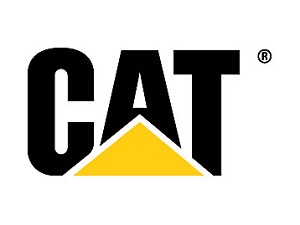 Caterpillar said that their microgrid technology would be best suited for telecom towers, rural electrification, mining and industrial facilities where the units could be combined and connected to supply energy in an energy network setup. It has taken Caterpillar only one year since the announcement of their collaboration with photovoltaic developer First Solar. They called it a 'strategic alliance' and are looking at supplying to areas such as the Asia-Pacific regions, Africa, and Latin America, then gradually adding other customers not long after.
Caterpillar said that their microgrid technology would be best suited for telecom towers, rural electrification, mining and industrial facilities where the units could be combined and connected to supply energy in an energy network setup. It has taken Caterpillar only one year since the announcement of their collaboration with photovoltaic developer First Solar. They called it a 'strategic alliance' and are looking at supplying to areas such as the Asia-Pacific regions, Africa, and Latin America, then gradually adding other customers not long after.
The announcement from Caterpillar comes after Lockheed Martin - known for their aerospace engineering endeavours - joined the game with corporate and industrial sized battery units to supply energy to businesses in peak hours, alleviating stress on the grid.
Rick Rathe, the general manager of new ventures for Caterpillar's Electric Power Business told Power Mag: "With the declining cost of renewable energy sources and rapid advances in energy storage technology, the time is right to provide an integrated application for remote power. Cat Microgrid technologies deliver an innovative, financially viable way to incorporate sustainable sources of energy into our existing portfolio of traditional power generation offerings."
Visit their website to learn more about their entry into renewable energy technologies: http://www.cat.com/powergeneration. Their aim is to be the leader in offering renewable energy sources to multiple industries including agriculture, commercial businesses, construction, data centers, greenhouses, healthcare, landfills, manufacturing, mining, municipality, power plants, telecom, and utilities. Sounds like the heavy hitters are here to stay.
Australia wants to be the leader
The political party known as The Greens in Australia has said it would be beneficial if they were granted up to $2.9 billion to equip 1.2 million houses with energy storage units which could see the country becoming the leader of renewable energy in the world. The proposition also includes 30,000 businesses that would benefit from the energy storage units. An endeavour that would only cost the government $38 million, says the group.
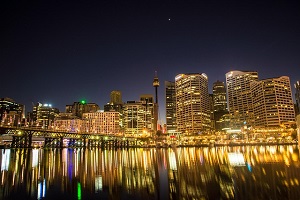
The Greens energy spokesman, Adam Brandt spoke to the Guardian Australia, saying: "Now is the time to jumpstart the battery industry, encourage the take up of storage and help make Australia a renewable energy leader." The group wants Australia to be fully integrated with energy storage units by up to 90% by 2030.
These plans were thrown into the mix along with the Clean Energy Council's impending safety regulations on the photovoltaic panel installers in Australia, which is starting to equate to the country being the most prepared for the energy storage revolution.
However, it seems the government of Australia has not yet latched on to The Greens plans, however, their fight continues. The Greens say too much money is going towards companies that still produce fossil fuels and that the government should strongly consider giving them the backing and make Australia the most forward thinking nation in terms of energy storage units.
- Details
- Written by: Quintus Potgieter
At Flat Rock Assembly plant in Michigan in the United States, Ford is testing out their new, portable 'aeroacoustic wind tunnel'. They are going as far as to say that this portable wind tunnel is the first mobile version of its kind and are waiting on a patent for the portable invention to clear. Now, Ford's engineers can test vehicles at the plants they are built in without having to transport the vehicles to facilities with built-in wind tunnels.
The aeroacoustic wind tunnels will deal with the noise generation of the wind that flows past a car when it is travelling at a speed, or staying stationary. The portable wind tunnel is nestled into two 53-foot shipping containers, which can be lifted onto flatbed trucks and transported. The process takes about six hours, but then the tunnels are ready to go.
In a statement, Bill Gulker, Ford's wind noise core supervisor said: "This project was born from a desire to be the best when it comes to controlling and limiting the cabin noise customers are so sensitive to. And our new mobile wind tunnel saves our engineers time and increases productivity."
According to AutoNews, a standard aerodynamics lab costs around $50 million to make, but this new invention would shave almost half off of that cost.
"Now, we're able to detect even the most subtle noises. We can identify an area in need of improvement, have key people gather, communicate quickly and resolve the issue without delay," said Gulker.
The team of engineers can push out 80 MPH to perfectly simulate the speeds of air that whooshes by on the highway. By doing this, they can minimize the amount of sound that makes it into the cabin during a trip in the car.
- Details
- Written by: Quintus Potgieter
IBM is allowing the public to access its quantum processor from the cloud. Through applying on their website, anyone could get rights to test out the only known quantum computer known to be in operation in the world. NASA, Google, and Microsoft are all reportedly looking into how they could utilize quantum computing and how to use it for the benefit of their companies.

Arvind Krishna, senior vice president and director of IBM Research in a statement: "This moment represents the birth of quantum cloud computing. Quantum computers are very different from today's computers, not only in what they look like and are made of but more importantly in what they can do. Quantum computing is becoming a reality and it will extend computation far beyond what is imaginable with today's computers."
The five-qubit quantum computer can be accessed over the internet which critics are saying would open a new window to the world that would figure out what quantum computing could be used for to improve the world.
TIME magazine recently published a list of theoretical uses for quantum computing:
- Safer airplanes
- Discover distant planets
- Win elections
- Boost GDP
- Detect cancer earlier
- Help automobiles drive themselves
- Reduce weather-related deaths
- Cut back on travel time
- Develop more effective drugs
Quantum computing might be the future of computing, especially for Internet of Things devices that need to be connected to a network and produce data and analytics. Quantum computing would make any data available at the click of a button. Data that would have taken days. months or years to access in the past.
Never before has a quantum computer been opened for widespread use by the public, so IBM's cloud-based operation will be a test drive for how the technology can be applied to the world. It is being named the IBM Quantum Experience and will allow the running of algorithms and will allow the use of individual qubits.
The quantum computer utilizes quantum theory and in turn stores information that way. It is faster than any computing system invented in the world today and can perform thousands of tasks at once.
Jay Gambetta, the manager of Theory of Quantum Computing and Information at IBM, spoke to Computerworld, said: "Since this open to the public, there is no organization or business that will have priority. There are several opportunities for material and drug design, optimisation, and other commercially important applications where quantum computing promises to offer significant value beyond what classical computers can offer."
- Details
- Written by: Quintus Potgieter
Self-driving cars and self-flying drones are always in the news, however, have you ever heard of self-driving ships?. The Titanic would have been a different story if somehow the self-driving technology the ship had could have spotted and avoided the iceberg. Oh, the possibilities. Just imagine getting on a cruise ship that has no crew steering it. Fiction becomes fact quite quickly in the engineering world these days.
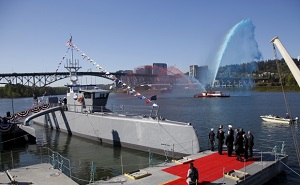
The Pentagon has revealed the world's largest unmanned surface vessel. A self-navigating, self-driving 40-meter ship that would be able to sail up to 10,000 nautical miles by itself. The ship is the brainchild of the Defence Advanced Research Projects Agency (DARPA) with the contribution of the Navy. The ship is being held at the San Diego coast and will be tested there for the next two years. In that time, the ship will interact with other ships and will also learn how to navigate around ships that are manned with personnel.
DARPA employee Jared B Adams said: "It's not a joy-stick ship." Meaning, the ship is not controlled by a controller like some drones are in the world today, the ship has been designed to drive itself with artificial intelligence like the self-driving cars we see today. However, if the ship does run into troubles it can be overridden by a human driver.
Allegedly, the U.S. has been hard at work trying to ensure that the ship is hacker-proof so that it cannot be programmed to go places that the Navy hasn't cleared it for. It reaches up to 29,9 MPH which is not amazing but it is something. The ship cost $152 million for the first prototype but DARPA confirmed one can be built for $16 million in the future, according to CBC News.
- Details
- Written by: Quintus Potgieter
A team of engineers at the University of California, San Diego have taken inspiration from nature for a new model that could be manufactured at a larger scale for usage in multiple engineering industries from civil engineering, but their focus right now is on aerospace engineering. The object is modeled after a sea urchin's mouth and teeth that have been made into a grappling tool. The researchers have published the details of the model in the Journal of Visualized Experiments.

The team modeled the mouth after the description of 'Aristotle's lantern' in Greek philosophy which speaks of a sea urchin's mouth. A sea urchin's mouth has movable spines and pincerlike organs which can scrape algae from rocks. The teeth are housed in a dome formation that works like a claw crane in an arcade.
The mouth has the ability to grip up soil or cut straight through rock, which has led to the researchers say that the vehicle could assist with gathering samples on Mars once the mission kicks off in 2018. The most recent vehicles sent to Mars collects samples through using shovels. Michael Frank, on his way to getting his P.h.D. at the Jacobs School of Engineering at UC San Diego and one of the author's of the paper said: "Our goal was a bio-inspired device that's more precise and efficient at grabbing ground samples from different areas, and won't disturb the surrounding area like a shovel would."
This could be useful in the future of civil engineering if the team could team up with construction vehicles to build a similar system for site construction. The group is led by Joanna McKittrick, a mechanical engineering professor and encourages the group to look at nature for inspiration when designing something.
The engineers tested the claw out by connecting it to a rover-like vehicle and letting it capture soil that was at a similar density of Mars' sand.
In the abstract to their report, the engineers say:
Bioinspired design is an emerging field that takes inspiration from nature to develop high-performance materials and devices.
We describe the bioinspiration process as including animal observation, specimen characterization, device fabrication and mechanism bioexploration.The last step of bioexploration allows for a deeper understanding of the initial biology.
- Details
- Written by: Quintus Potgieter
This is survival of the fittest. This is do or die. This is: the winner takes it all. Not just Eminem lyrics, but also the rule of thumb to the evolving renewable energies market. The country making the most strides forward in the renewable energy market is allegedly Britain, if a report by FT.com is to be believed. The report says thanks to the £10 billion cash injection into renewable energy, Britain has "quietly" become the leader in the market.
Allegedly, over the last year, renewable sources provided more energy to the UK than coal. FT points out that the industrial revolution began in the UK, which would mean that if the Godfather of industrial expansion could use more renewable energy than fossil fuel agents, it's a win for renewable energies.
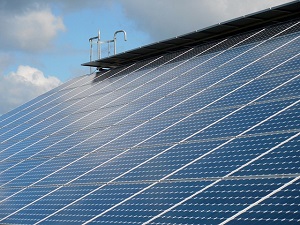 James Court, head of policy at the Renewable Energy Association said: "There are now solar PV modules installed on over 800,000 homes and businesses [in the UK]." He also says the UK possesses the "largest offshore wind industry, nearly 30 grid-scale energy storage facilities, and several biomass power plants."
James Court, head of policy at the Renewable Energy Association said: "There are now solar PV modules installed on over 800,000 homes and businesses [in the UK]." He also says the UK possesses the "largest offshore wind industry, nearly 30 grid-scale energy storage facilities, and several biomass power plants."
Elsewhere, American company SunEdison, who was a renewable energy firm, has filed for bankruptcy under chapter 11 of the U.S. Bankruptcy Court. You can read their entire press release HERE. Does this relate to a slump in solar energies in the United States? SunEdison has a promising future ahead of them. Any time a renewable energies company files for bankruptcy, something in the industry must have gone wrong, or else it's just mismanagement.
The Columbia University's, David Sandalow, discussed the future of solar energy with the New York Times due to SunEdison's filing for bankruptcy. He detailed three factors that will drive the solar energy industry forward:
- Solar module costs: They have fallen by 80 percent since 2007. Solar is cheaper than the competition.
- Governments around the world will throw their support behind solar power
- Integration of solar technologies into grids is "easier than many thought"
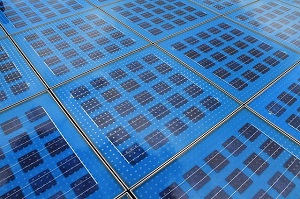 According to Sandalow, these factors will ensure that solar energy does not simply die in places like the United States.
According to Sandalow, these factors will ensure that solar energy does not simply die in places like the United States.
Furthermore, the Department of Energy in the United States is backing solar somewhat, and putting $25 million into a project titled Enabling Extreme Real-Time Grid Integration of Solar Energy, which is part of the Grid Modernization Initiative. The $25 million will reportedly fund 10 to 15 solar software and hardware solutions. This on top of the $220 million that was pumped into the DOE for research and development of grid modernization. The United States is not giving up on solar anytime soon.
"Our ongoing grid modernization work will help accelerate the widespread adoption of the clean energy resources that will define our low-carbon future. This funding will help that mission by supporting industry partners working to integrate, store, and deploy solar energy throughout our electric grid," said Lynn Orr, science, and energy undersecretary at the Department of Energy.
- Details
- Written by: Quintus Potgieter
It was the start of the weekend in Nairobi, Kenya, on Friday the 29th of April, 2016. Tragedy struck the capital city when a six-storey building collapsed due to a storm. The death toll has risen to 21 in an event that will raise questions about the civil engineering practices of Kenya and their safety.
According to News24, the Kenyan Red Cross said 60 people remained missing, meaning the death toll could be much higher. The police, however, spoke to media and said that 121 people had been rescued by the 30th of April.
 After four days, a child was rescued from the rubble according to a tweet Kenya Red Cross sent out.
After four days, a child was rescued from the rubble according to a tweet Kenya Red Cross sent out.
Then, on Monday, the owner of the collapsed building was arrested. The owner's name is Samuel Karanja Kamau and appears in court, today, the 3rd of May.
According to BBC News, the officials who approved the construction of the six-storey building in what is considered to be a low-income part of Nairobi would be fired effective immediately.

Kenyan President Uhuru Kenyatta handed down the order for the owner to be arrested. The Deputy Governor of Nairobi spoke to media, saying: "At least seventy percent of buildings are erected without proper certification especially in areas like this." The district in question is the Huruma district in Kenya's capital.
The people of Kenya are calling on the government to review the practices in civil engineering in the country so that these sorts of tragedies do not happen again.
Speaking to All Africa, a Kenyan architect, Peter Mungai said: "In many upcoming buildings, county by-laws are disregarded. You'll be shocked to find that permits are granted for questionable projects with the people mandated to monitor buildings processes rarely on site." The website also references an unconfirmed study that reportedly states that between 2006 and 2014, 17 buildings collapsed in Kenya.
The Dean of Engineering at the Engineering Institute of Technology, Steve Mackay, has called the collapse of the building 'horrific'. He said: "Civil engineers and structural engineers have a critical job to perform. The job is to design structures that are safe at all times, no matter what stressors happen." He also says that engineers only work to the limit of their knowledge. "Whenever you've got some doubts about the environment in which you're working, put in additional safety factors or go back to the labs and do further testing. If you're building a structure such as a bridge or a building, safety is paramount."
- Details
- Written by: Quintus Potgieter
The online crypto-currency, Bitcoin, is no doubt an impressive feat of engineering minds coming together and creating something that has the ability to change the world. However, the engineers behind it and who in fact created Bitcoin was not known. That all changed on the 2nd of May, 2016.
Craig Wright, an Australian cryptographer, says he is behind the Bitcoin currency. WIRED spoke to the chief scientist of the Bitcoin Foundation and one of the programming engineers who worked on the early stages of Bitcoin and confirmed that Wright is definitely who was thought to be Satoshi Nakamoto.
Satoshi was a fake name that Wright gave as a pseudonym while a group of engineers and cryptographers worked on the currency. Andersen wrote a blog post conceding that the man known as Satoshi Nakamoto, was in fact, Craig Wright, in a blog post. He said:
I hope he manages to mostly ignore the storm that his announcement will create, and keep doing what he loves -- learning and researching and innovating.
I am very happy to be able to say I shook his hand and thanked him for giving Bitcoin to the world.
 Wright did not adopt an 'I in team' approach to talking about how Bitcoin was set up. He said, "I was the main part of it, but other people helped me."
Wright did not adopt an 'I in team' approach to talking about how Bitcoin was set up. He said, "I was the main part of it, but other people helped me."
Jon Matonis, an economist and founding director of the Bitcoin Foundation said: "During the London Proof sessions, I had the opportunity to review the relevant data along three district lines: Cryptographic, social and technical. It is my firm belief that Craig Wright satisfies all three categories."
Wright praised the community that assisted and grew Bitcoin into what it is today. In a blog post, he wrote:
You have dedicated vast swathes of your time, committed your gifts, sacrificed relationships and REM sleep for years to an open source project that could have come to nothing. And yet you still fought. This incredible community's passion and intellect and perseverance has taken my small contribution and nurtured it, enhanced it, breathed life into it. You have given the world a great gift. Thank you.
Source: BBC/Wired
- Details
- Written by: Quintus Potgieter
It has taken a while but finally the Clean Energy Council of Australia (CEC) has released guidelines that will tighten home battery storage reliability in terms of installations. A picture of an 'exploded' lithium-ion battery was circulating on Australian social media channels back in March which spurred an ongoing push for more reliable installation methods.
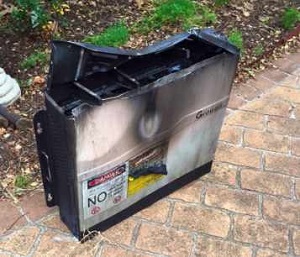
In Australia, specifically, installation standards have not been upheld and installation training has not been prioritized as of yet. In the United States, the National Fire Protection Association has been training firefighters to respond to fires caused by energy storage systems, according to MicroGridKnowledge. The fires synonymous with home energy storage units is caused by thermal runaway. This is where one cell fails and catches fire which causes the rest of the cells in a unit to also catch fire, causing an explosion. A firefighter, Matt Pais, explains: "When lithium-ion burns, it creates its own oxygen. It can create a violent explosion depending on the chemistry. The cells can explode why they overheat. If you take 20 or 30 of those cells and subject them to heat when you're testing the cells, you can have huge amounts of toxins and flammables."
Thus, the CEC in Australia has released the installation and safety guidelines for installing home energy storage units. The CEC now has Solar Accredited Installer cards that an installer is required to have to ensure that an installer is proficient in the tools of installing home energy storage unit systems. They have currently accredited 4,800 installers in Australia alone. Recently, you did not have to have any form of formal training to install energy storage units inside homes.
According to One Step Off the Grid, the Installation Guidelines for Grid-Connected Energy Systems with Battery Storage would be able to ensure secure installations that are done correctly and minimize the chance of accidents occurring with the installation of the estimated 50,000 battery storage systems to be connected in Australia in the next year.
CEC Chief Kate Thornton said: "Everyone is excited by the potential future of a future created by a combination of renewable energy, home energy storage and smart energy technologies. The new guidelines are an important step in making that vision a reality. It is obviously important that industry professionals take these risks extremely seriously and operate in a way that ensures the safety of themselves, their colleagues and consumers."
These guidelines also rely on the energy storage unit companies to engineer reliable products that don't malfunction and explode. To emphasize reliable engineering, the Dean of Engineering at the Engineering Insitute of Technology, Steve Mackay, broached the topic in the nineteenth episode of the Engineering News Network. The reliability is not limited to energy storage units, but it would be a good reminder to energy storage unit manufacturers to build reliable systems. And most of the electronic devices we use today are powered by lithium-ion, so the reliability of lithium-based products needs to be emphasized.
Mackay says:
A lot of devices exhibit the 'bath tub' reliability curve which you're probably familiar with. Which means at the beginning of the life cycle of a product, high failure rate and then it settles down and then most of the product lifetime there is a low failure rate. Then, near the end of the lifetime you get that tweak upwards of high failure rate.
No product is going to be manufactured with a 100% reliability, for the simple reason that it would cost too much. Manufacturers and vendors wouldn't be able to sell their products. A lot of products - such as phones - do have a lower than 100% reliability. That is the way of the commercial world.
Mackay concludes by saying the only industry that needs to have complete, one hundred percent reliability is in the manufacturing of aircraft parts. However, it is clear that policymakers cannot keep up with the speed of invention in the battery storage industry, but, the Clean Energy Council of Australia are monitoring the situation and ensuring that installation methods are safe and reliable.
To receive accreditation in Solar PV installations, visit the Solar Accreditation Australia website.
- Details
- Written by: Quintus Potgieter
The civil engineering, defense, forestry and agriculture industry have been adopting LiDAR (Light Detection and Ranging) technology. A trend that started in 2014 and will continue to 2020. This according to a report by Allied Market Research that has published its findings in a journal titled Global LiDAR Market - Size, Industry Analysis, Trends, Opportunities, Growth and Forecast, 2013-2020.

Explaining the benefits of LiDAR, Director of Remote sensing at Dewberry, said: "The laser ranging device sends out millions of pulses - today they can send out over four hundred thousand pulses in one second. That technology gives you the distance and the range to the target." The technology also uses global positioning systems and IMU systems as well. It is the most reliable way of navigating terrain that currently exists in the world of today. It is the technology that allows self-driving cars to navigate and avoid obstacles that come across its path. Hence, the LiDAR market is growing rapidly.
The Indian government also spoke of how they will be adopting more LiDAR technologies in the near future. The Surveyor General of India spoke to The Hindu, saying: "Use of LiDAR technology is quite beneficial and it gives quality data in digital form in a short time. This data can be used in many projects related to roads, canals, surface transport, city planning, landslides, irrigation etc,"
The report by Allied Market Research says that the LiDAR market is expected to rake in $3.22 billion by 2022. The reason for the spike in the market, analysts say, is due to the automotive sector and civil engineering industries continuing to make use of LiDAR technology.
LiDAR technology has been estimated to have the biggest CAGR (compound annual growth rate) in the UAV (unmanned aerial vehicle) sector due to the number of drones being purchased by the media, entertainment, precision farming and personal hobbyist industries, including the governmental use as well. The market will grow most in the Asia-Pacific regions between 2016 and 2022, the report said.
However, North America currently owns 45% of the current market in 2015, with Europe trailing them with a 33% revenue share, according to DirectionsMag.
Ford has recently used LiDAR to allow a self-driving car to see in the dark. To see what a self-driving car utilizing LiDAR technology would 'see', check this video out:
- Details
- Written by: Quintus Potgieter
The competition for space on your wall in your garage or in the basement of your business is heating up in the energy storage battle as more companies bring out their answer to renewable, clean energy units. Tesla's Powerwall caught the attention of the public globally, whilst in Australia, Redflow's ZCell impressed audiences. Now, Mercedes-Benz and Lockheed and Martin are entering the game, to confuse consumers even more as to who to give their money to.
Mercedes-Benz says:
Innovative new energy storage systems for businesses and private customers -- powered by lithium-ion batteries commonly found in electric vehicles -- are now able to efficiently store and release energy on demand. Lithium-ion energy storage systems are at the ready to provide complete freedom to consumers
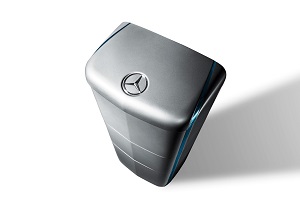
Therefore, Daimler AG with the contributions of Deutsche ACCUMOTIV have developed their own home energy storage systems and have begun shipping them. The companies supply the latest Mercedes-Benz models with their electric systems.
Harald Kroger, the Head of Development Electrics/Electronics and E-Drive Mercedes-Benz Cars said: "There is tremendous interest in our energy storage units and we have already received numerous orders. Over the coming months, we will continue to step up and expand both sales in Germany and on the international market."
Daimler can reportedly connect up to 8 battery modules that have 2.5kWh each that would add up to 20kWh, which would provide a good backup system for grid peak times. According to their press release, the price for the photovoltaic cells would be calculated based on the customized package a customer would order. These would include the photovoltaic system, battery inverter, energy management services from Daimler and the Mercedes-Benz energy storage unit. Then installation costs as well.
In Daimler's press release they spoke of the reliability of the product they are launching:
Their network of qualified specialist installers take care of providing the end customers with on-site advice, planning, compiling an individual quotation for all components and the actual installation. Stationary battery storage units are generally installed together with a photovoltaic system. Some 500 installers throughout Germany have already undergone training in collaboration with partners.
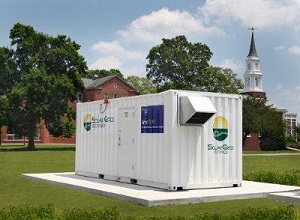
Lockheed Martin also wants in on the action, it seems. They are launching an industrial-sized photovoltaic system that trumps the current Tesla Powerpack. The Powerpack currently pushed out 100kWh, but Lockheed Martin's will achieve both 250kWh and 500kWh depending on which one is purchased. For now, it doesn't look like they will be doing private (home) energy storage systems, however, it seems they are trying to assist electricity grids around the world so that cleaner energy can be produced.
Whether or not Lockheed Martin becomes a major competitor remains to be seen due to their focuses on aerospace engineering that seems to be getting more attention than energy storage. Thankfully, the more entrants into the private and public energy sector mean more security training and further development in the industry which relates to safer batteries and a good selling price point.
- Details
- Written by: Quintus Potgieter
Product engineers reinvented the wheel this week. Okay, maybe they just redesigned the hair dryer. Dyson known for their vacuum cleaners, hand dryers, fans, and heaters has now entered the beauty game with their new design, that reportedly cost $71 million to develop. The company has called it the Dyson Supersonic and will cost $400. The price tag is astounding for a hair dryer, however, the fashion industry is probably going to latch on to the premium product quite quickly, getting the money to those engineers who arguably reinvented the hair dryer.
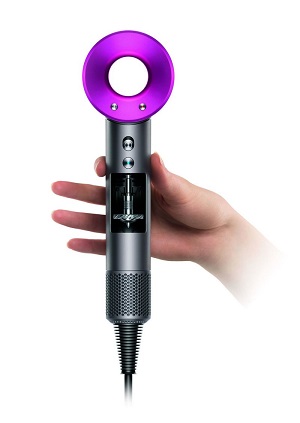
Tom Crawford, the Head of Product Development for New Categories at Dyson told TechCrunch, "When Dyson goes into a new category, we always think about how we can make it better. Part of the challenge is making sure we invest in the right technology and testing to do so. The first part of this was to learn the science of hair. How to test it, how to make it repeatable, and then how to measure it. We built our own state of the art laboratory dedicated to investigating the science of hair."
Yahoo spoke to Dyson as well, revealing that the company sent their engineering team to beauty school to gain inspiration before developing the new hairdryer. How many engineers can say they've been to beauty school in their illustrious careers? Dyson said, "We are experts in all things airflow, fluid dynamics, hardware...all things engineering. But we surely aren't style experts. Having a group of young engineers attend styling classes made them see the end benefit of this machine and how the hair dryer can truly be improved."
What is under the hood, you ask?
Dyson says they have created the Dyson digital motor V9 . It is a small motor that the engineers managed to fit in the handle of the dryer, instead of the usual head placement of the motor in other dryers. They have also developed a glass bead thermistor which transmits data to a microprocessor which the company says "intelligently controls the patented double-stacked heating element."
We're starting to understand why this engineered hair dryer costs $400.
Check out this video that shows off the technology - the part we care about most, right engineers? - of the new Dyson Supersonic.
- Details
- Written by: Quintus Potgieter
The United States' first shipment of liquefied natural gas (LNG) has made its way to Europe this week. The U.S. has always been a big LNG producer but not big on export. Now that the country is becoming an exporter, analysts are saying it will be causing competition in the LNG market.
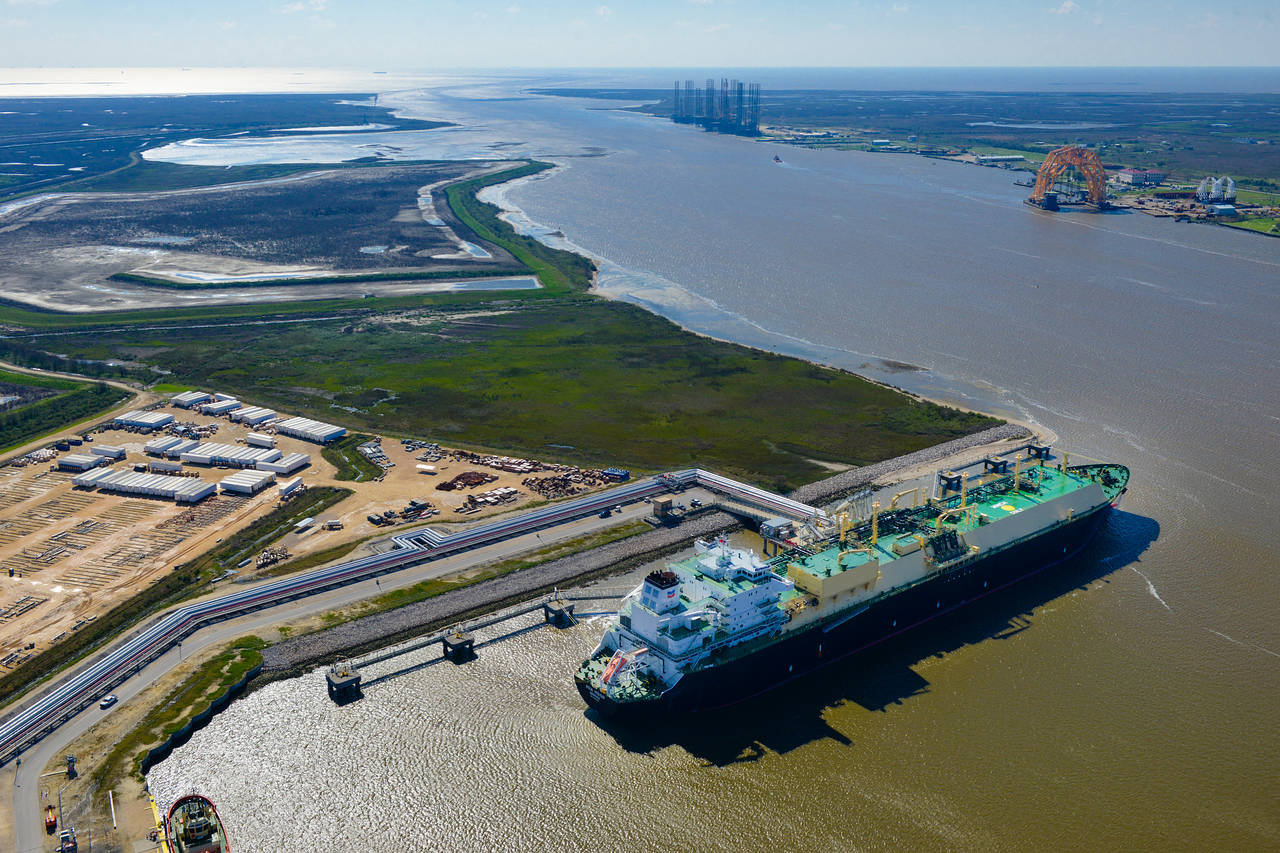
The market has been dominated by Russians companies. However, Thierry Bros, an analyst at Societe Generale told Wall Street Journal: "It's the start of the price war between U.S. LNG and pipeline gas."
The U.S. delivered the LNG to Portuguese company Galp Energia. Analysts say that the U.S. will become a key player in LNG exporting by 2017.
Russia is currently shipping LNG that is 35% more expensive than the U.S, but according to WSJ, the suppliers were prepared for a price war and would be able to cut rates in half. Russia cannot afford to lose business in the LNG sector due to the export being one of the most profitable exports the country has.
An energy analyst from Strategy&, Rui Almeida, spoke to SputnikNews about the Russians' situation:
Gazprom [the Russian energy company] will be faced between losing market share or lowering prices. And Gazprom has publicly said they will defend market share so the best is on lowering prices. What we may see play out in gas is not dissimilar to Saudi Arabia's strategy in crude market - going for market share, maintaining production to price out higher marginal cost producers namely US oil. We may witness a similar strategy by Gazprom as it protects market share in Europe.
- Details
- Written by: Quintus Potgieter
Cybersecurity engineering is quickly becoming a lucrative field to become well educated in due to the digital exodus that companies are making into cloud-based solutions. Entire companies and even power utilities that service an entire country are moving their operations and interfaces into the cloud, using the Internet of Things to access data output they were previously never able to observe. These systems need security and that is where cyber security engineers come in.
Tertiary institutions now offer modules that would assist individuals with becoming proficient in securing companies, and in turn, protecting them from cyber attacks. To lay the groundwork for being qualified as a cyber security engineer, an individual - for example - could take a six-week Cybersecurity for automation, control, and SCADA systems course.
CloudPassage, who offer cyber security to enterprises, say that cyber security education in U.S. tertiary institutions got an 'F' for cybersecurity education. The group says that they conducted research of 121 top-ranked U.S. universities and discovered shocking revelations.
Their findings regarding the top 50 universities [out of the 121 surveyed] revealed:
- None of the top 10 U.S. computer science programs require a cybersecurity course for graduation. In fact, three of the top 10 university programs don't even offer an elective coourse in cybersecurity
- University of Michigan (ranked 12th) is the only one of the U.S. News & World Report's top 36 U.S. computer sccience programs that requires a security course for graduation
- Only three of Business Insiders' top 50 U.S. computer science programs require a cybersecurity course for graduation: University of Michigan, Brigham Young and Colorado State University
 CloudPassage also quoted Commerce Secretary, Penny Pritzker, who said that there are 210,000 unfilled cybersecurity jobs in the U.S.
CloudPassage also quoted Commerce Secretary, Penny Pritzker, who said that there are 210,000 unfilled cybersecurity jobs in the U.S.
Robert Thomas, the CEO of Cloudpassage said: "There needs to be a fundamental shift in the cybersecurity paradigm; we must get to a point where every university requires computer science majors to complete cybersecurity training as a graduation requirement, so that the programmers and developers of the next generation have security front-of-mind when delivering products to the market."
These revelations reported on whilst the Government Accountability Office of the United States issues a warning about cybersecurity of vehicles. The fact that self-driving cars can be hacked into is becoming a concern for the GOA and the current capability hackers might have to hack into vehicles.
"Researchers have shown that these interfaces -- if not properly secured -- can be exploited through direct, physical access to a vehicle, as well as remotely through short-range and long-range wireless channels. For example, researchers have shown that attackers could compromise vulnerabilities in the short-range wireless connections to vehicles' Bluetooth units -- which enable hands-free cell phone use -- to gain access to in-vehicle networks, to take control over safety-critical functions such as the brakes."
- Details
- Written by: Quintus Potgieter
Engineers are often presented with an opportunity to create something they never thought they'd be attempting due to the way humans integrate with technology. Humans are constantly staring down at their smartphones whether it's the increasingly dangerous texting and driving in a car, or walking down the street, with their eyes glued to the screen.
Engineers in Germany noticed that when people look at their smartphones at traffic lights, they tend to ignore the traffic lights.
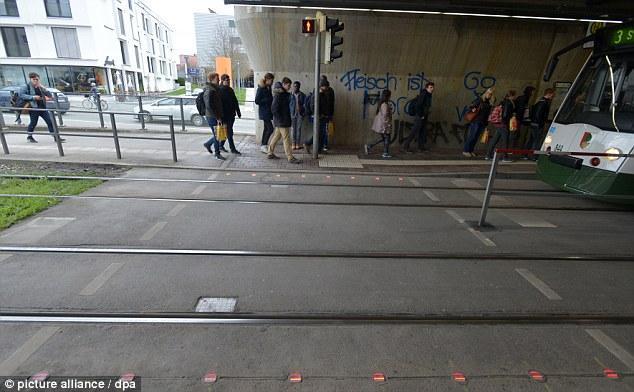 According to the Washington Post, the city of Augsburg will be looking into implementing traffic lights built into the pavement. This way, people who are looking down at their phones will see an illuminated pavement and know when it is safe to walk over the road. The light-up pavements have been tested at tram stations in the town, and may lead to further development if proven to be successful.
According to the Washington Post, the city of Augsburg will be looking into implementing traffic lights built into the pavement. This way, people who are looking down at their phones will see an illuminated pavement and know when it is safe to walk over the road. The light-up pavements have been tested at tram stations in the town, and may lead to further development if proven to be successful.
Stephanie Lermen, a spokeswoman for Augsburg, said: "It creates a whole new level of attention."
But some of the German residents of the town are not convinced pavements that light up with the colour of the traffic lights are good to have. The greater public are not convinced taxpayer money should be spent on the pavement lights.
Multiple reports in several countries have alluded to the fact that smartphone distraction in public areas is killing humans, which makes the case for engineered solutions for life-saving inventions.
Should other countries follow suit or are the light-up pavements a waste of taxpayer money?
- Details
- Written by: Quintus Potgieter
Tesla has announced the price information on its commercial and utility-scale products. They will be selling what are known as 'Powerpacks'. Is it time to replace that old generator powering your workplace once the lights go down? Perhaps you should hold onto it a little longer. Critics are saying Tesla's Powerpacks are on the expensive side.
The minimum amount of Powerpacks you can order today is 2 Powerpacks at the price of US$47,000 each. That is just for the Powerpack itself. The batteries come with a US$65,000 Bi-directional 250 kW Inverter and support hardware that will set you back US$3,000. Then you pay extra for installation.
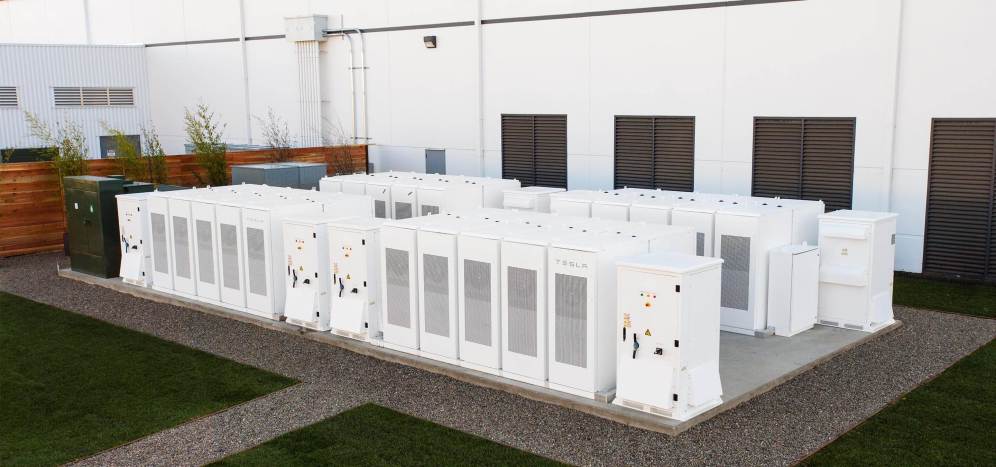
Electrek confirms the least expensive Powerpack solution will set a business/customer back US$162,000 for 200 kWh of energy and 100 kW of peak power.
If an industrial complex is interested in clean, renewable energy, there is a 54 Powerpack solution from Tesla, which would set a company back US$3,217,000.
Tesla says the Powerpack is ideal for peak shaving which discharges "at peak demand to avoid or reduce demand charges" as well as serving as an emergency backup in grid interruption circumstances and load shifts so that a customer can avoid hefty energy prices.
A supposed customer utilizing the Powerpacks has written a testimonial, vouching for the energy solution. The customer in question is Jackson Family Wines and they wrote:
With Tesla Energy, we have taken a two-fold approach to energy management at our wineries by improving operational efficiency across all lvels of our organization and reinvesting those savings in onsite renewable energy systems.
Will you be getting these Powerpacks for your company?
- Details
- Written by: Quintus Potgieter
Siemens have announced their entry into the fourth industrial revolution (Industrie 4.0) at Hannover Messe this week. The company is releasing a solution for companies of all sizes in every industry in what they are calling their 'digital expansion' solution. They indicate that they are bringing the virtual world and the real world together in a fully functional 'eco-system' of industrial automation, which a lot of companies are now doing to accommodate the oncoming IoT revolution.
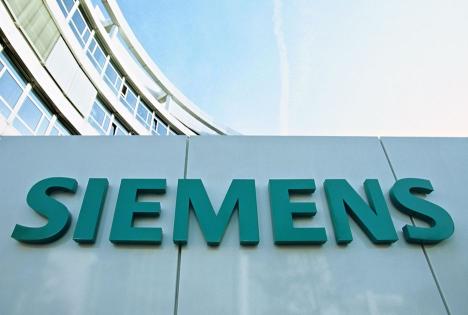
Member of the Managing Board of Siemens AG, Klaus Helmrich, said in a statement: "To support our customers on their way to attaining Industrie 4.0, no matter what size their company and not matter in which industry, we have undertaken further development of our Digital Enterprise portfolio. We are now in a position to offer them even more and even better solutions to address their needs.
Siemens's strongest industries they are currently operating in - that they are showing off at Hannover Messe - are energy for industry, additive manufacturing (3D printing), automotive industry and the fiber industry. For these industries, Siemens says a Totally Integrated Automation (TIA) Portal V14 can be utilised to automate processes in a company and thrust their business forward into Industrie 4.0.
Furthermore, data and analytics services are being offered, which Siemens says will lead to "higher quality, more efficient products, and processes."
"It is precisely in this data consistency that we envisage the opportunity to realize the demands of Industrie 4.0," says Helmrich.
Their media brief also said:
Using "Integrated Mechatronincs Engineering for Automation" will also enable components to be used as complete units when developing a machine or plant: for instance, motors, drives, valves or entire modules containing detailed information about all the involved engineering disciplnes.
Helmrich concluded by saying: "For companies in the process industry, there are different ways in which digital transformation can be implemented. They can draw existing facilities into the digital world one step at a time, enter into integrated operation or also carry out the transformation of documentation into digital data."
- Details
- Written by: Quintus Potgieter
The 3D printing industry has been reported on recently due to its successes in the market. It was said that the 3D printing industry would grow by another billion dollars due to personal 3D printers being purchased by enthusiasts. Moreover, an instructor from an Engineering Design Graphics department at San Jacinto College says that 3D printing could be thrusting the world into another industrial revolution.
William Buel, the instructor in question, in an interview with Chron, said: "In the future you will see whole factories running only 3D printers to design, run, modify and finish products. 3D printing is already becoming very useful for rapid prototyping. Now if a company wants to build a new product, we can draw and print the prototype within hours to see if it works, rather than sending it to a machine shop, waiting months and then having to start over. In 10 years, every home will have one."
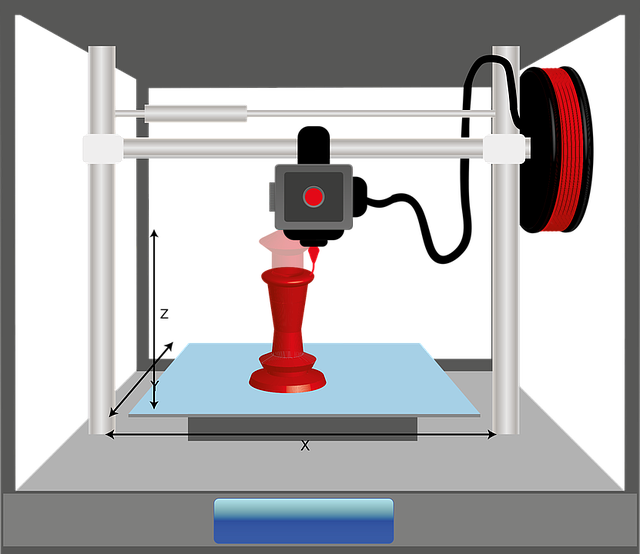 However, a small hitch for companies who supply 3D printers was highlighted this week. A company that many had hope in called Makerbot, who actually built 3D printers, announced that they would stop production and outsource the making of printers to another company named Jabil.
However, a small hitch for companies who supply 3D printers was highlighted this week. A company that many had hope in called Makerbot, who actually built 3D printers, announced that they would stop production and outsource the making of printers to another company named Jabil.
The announcement blog post written by the CEO of Makerbot, Jonathan Jaglom, stated: "To achieve our long-term goals, we also need to be able to navigate the volatility of an emerging market. Working with Jabil will position us to better manage rapid change in our industry and reduce our manufacturing costs to compete more effectively in a global marketplace."
The CEO further confirmed that the 3D printing market "has been very volatile". Strange, considering the Wohlers Report 2016 said that the 3D printing industry grew by 25.9%, and assured the public that the industry is not in decline.
Makerbot was initially the company that gave hope to the industry and said that your regular joe would be printing a plethora of items in the luxury of his/her own home. Then the company retrenched 20% of its staff, and it has struggled to surface due to the amount of printers being ordered since then.
In other 3D printing news, a Chinese startup company is releasing a material known as Polysmooth. Allegedly, the new material can be used by any third party printer to ensure that whatever is printed has no rough edges or any other issues. The idea is to refine the process due to current 3D printing practices churning out objects which are rough to the touch. The company says that their new material 'self-polishes' the materials when put it into the printer. Check out their: Kickstarter
- Details
- Written by: Quintus Potgieter
Civil engineers would be pleased to know an update for AutoCAD Civil 3D will be available to them soon. The software gives engineers the ability to give a virtual showcase of what a certain addition to a town might look like. The new AutoCAD Civil 3D 2017 is an updated version of Autocad boasting new additions that will assist civil engineering and infrastructure designs.
The new version will team up with InfraWorks 360 to keep tabs on work progress in engineering teams. This plugin allows InfraWorks infrastructure objects to be imported into the program.
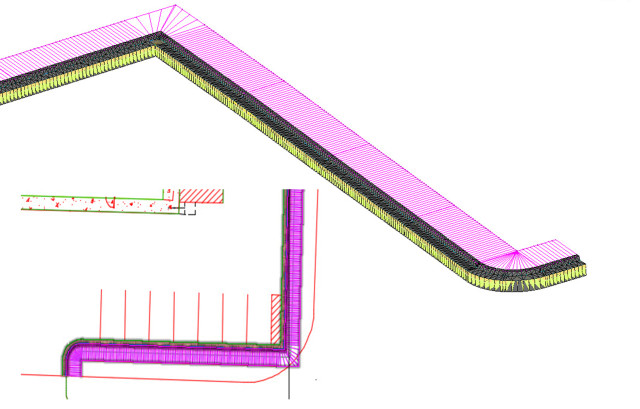
Corridor design has also been reupholstered into the new version of the software. Greg Dixie, an application specialist for Excitech Ltd, previewed the new corridor design abilities in a YouTube video. He said: "You can make short-cut corridor models. I can import my corridor models into the program and it looks slightly different than it did before." Another addition is the extraction of corridor properties, which is also something new in the 2017 iteration of the program.
According to Engineering.com, pipe design is also an updated feature. The program includes a larger library of "pressure pipe content" for HDPE, PVC and steel pipes.
Theo Angelopoulos, director of infrastructure industry business strategy and marketing at Autodesk said: "Today's civil infrastructure professionals face huge challenges to build new or retrofit our communities' infrastructure for transportation, land use, water, and energy in ways that are more economical, practical, resilient and attractive." They are confident that the program will assist civil engineers in creating the best possible virtual representations of how to engineer something that is of worth to the community and that can be built according to the digital guidelines that the software provides.
What program is essential to your engineering career? Let us know in the comments section.
- Details
- Written by: Quintus Potgieter
German watchdogs combing through carmakers' technology to uncover emissions test cheating software have discovered that automobile manufacturers are using other methods that lead to lower emission counts. These revelations from German Transport Minister, Alexander Dobrindt. Allegedly, the carmakers "tweak engine performance" which results in more emissions but less data on those emissions when the software is checked.
According to Reuters, Germany's KBA Federal Motor Transport Authority tested 53 vehicles to find out if carmakers followed the same practices that Volkswagen did, in order to manipulate emissions testing. The results of the tests found that VW was the only manufacturer that made use of cheating software, but, the other manufacturers dabbled in what is being called a 'thermal window'.
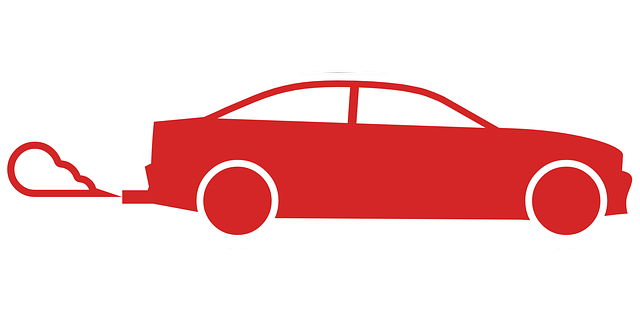 Due to the 'thermal windows' findings, the German government is set to recall 630,000 vehicles. Government officials talking to the media said: "The recall is aimed to ensure that a legal loophole allowing manufacturers to throttle back emissions treatment systems under certain circumstances is tightened to make sure lower levels of pollution going forward."
Due to the 'thermal windows' findings, the German government is set to recall 630,000 vehicles. Government officials talking to the media said: "The recall is aimed to ensure that a legal loophole allowing manufacturers to throttle back emissions treatment systems under certain circumstances is tightened to make sure lower levels of pollution going forward."
The 'thermal window' approach - most probably coaxed up by very clever automotive engineers - reportedly works around the process of condensation build up in catalytic converters and the throttling back emission management systems to protect the engine from that build up.
Switching off or throttling back emissions treatment systems, however, has the added benefit of improving engine performance and stretching the interval between refilling vehicles with urea, a subtance needed to extract NOx from exhaust fumes
- Markus Wacket, Reuters News Agency
The German government is trying to cut down on the amount of nitrogen oxide (NOx) that is polluting the air and that is part and parcel as to why they are recalling 630,000 vehicles so that this work-around 'thermal window' solution can be investigated.
- Details
- Written by: Quintus Potgieter
Brexit, or rather known as the possible British Exit of the European Union, could damage engineering in a big way, say industry experts. Engineering UK has heard that a vote for Brexit could lead to a slump in "vital research funding" and add to a shortage of skilled engineering workers in Britain.
According to The Telegraph, companies such as Rolls-Royce, Airbus and Caterpillar are behind the vote not to leave the European Union due to the companies saying it will cause "unknown and unquantifiable transition risks."
Naomi Climer, president of the Institution of Engineering and Technology said: "British engineering is deeply integrated with global markets and companies. If Britain votes to the leave the EU, the period of uncertainty about the terms on which access to these markets would be granted would a threat to the sector. The interests of engineering and technology may be best served by the UK remaining within the EU, and we are calling for urgent discussion on the impact of an exit decision on a sector that is so vital to our country's economy."
 The vote has been set for the 23rd of June, 2016. The companies who have encouraged a 'NO' vote collectively employ 100,000 skilled engineering professionals. The companies maintain that job losses would occur on the back of the decision to leave the European Union. In the letter that the companies drafted together, they say: "While the UK could tackle this problem by introducing a fast-track visa process for engineers and technologists, it is unclear how this would sit alongside the tighter border controls anticipated following an exit from the EU."
The vote has been set for the 23rd of June, 2016. The companies who have encouraged a 'NO' vote collectively employ 100,000 skilled engineering professionals. The companies maintain that job losses would occur on the back of the decision to leave the European Union. In the letter that the companies drafted together, they say: "While the UK could tackle this problem by introducing a fast-track visa process for engineers and technologists, it is unclear how this would sit alongside the tighter border controls anticipated following an exit from the EU."
The Mayor of London, Boris Johnson, is adamant that consideration must be made for the scenario of a British exit. He told SkyNews: "We asked for very simple things, like people coming here should have a job offer before they arrive or if they can't get a job within six months then they should go back. Those very simple ideas."
The worry is that skilled engineers will not be able to make their way into Britain to address an engineering shortage due to the European Union exit which would tighten up border control and make it harder for those international professionals to make it into the country.
- Details
- Written by: Quintus Potgieter
Imagine having your own compact aircraft that you could utilize at any point. Or imagine calling an UberAir to come and pick you up and transport you across town. Those days could be upon us with the introduction of an 18-rotor electric aircraft named the Volocopter. An aircraft that looks like something out of a kid's party packet, the rotors are placed around a network of beams that are connected to a large round beam. The engineers at e-volo who are behind the Volocopter are boasting about the fact that it does not release any carbon emissions into the atmosphere.
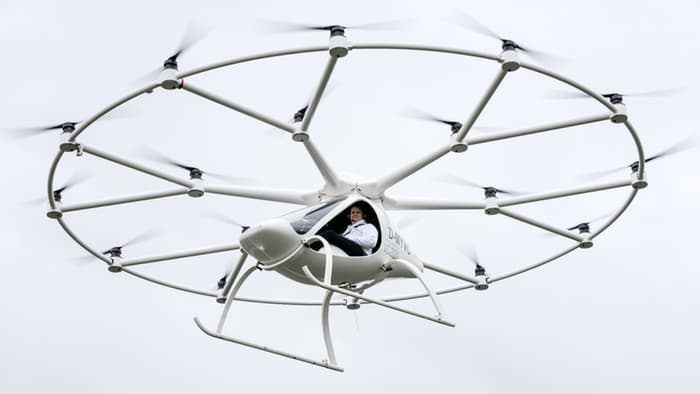
The entire thing weighs 992 lbs at take-off and has nine batteries powering the motors that can propel the aircraft to achieve 62 miles per hour in the air.
Alexander Zosel, the managing director of e-volo (the company that designed and built the aircraft), got to take the Volocopter out on its first flight. After it, he said: "The flight was totally awesome, the machine was absolutely reliable. The Volocopter immediately converted every movement I made with the joystick. The special thing with the Volocopter is that it is actually an aircraft that flies by itself. I can take my hands off the joystick, it stays in the air as if nailed there."
The team got the go-ahead to operate the vehicle from the German aviation authorities in February of 2016. according to Engineering.com. The team is also interested in selling the Volocopter commercially by 2018.
The future of manned personal vehicle mobility seems to be drawing closer due to this seemingly safe Volocopter solution. For the journey from design to the first manned flight, check the video below.
- Details
- Written by: Quintus Potgieter
Biomedical engineers in Singapore are using what would usually be discarded to facilitate a renewable source of minimizing the amount of food waste that occurs. According to StraitTimes, 66139lbs of soya bean residue gets sent to the dump every year.
So, the biomedical engineers at Nanyang Technical University (NTU) went to work and used residue from soya milk and tofu production and utilized it to grow yeast. The team is confident it will minimize costs on the cultivating of yeast in Singapore.
Professor William Chen who works in the School of Chemical and Biomedical Engineering at NTU, and lead the research, said: "Our data shows that the culture medium we developed grows baker's yeast as fast as commercial media. So the impact is potentially wide-ranging."
An assistant of the project, Dr. Jaslyn Lee, said they take the residue (or as they call it 'okara') and add it to "food-grade" microorganism. An enzyme is produced and a breakdown of the residue occurs into a "wool-like product."
The process reportedly takes five days.
The engineers say a liter will cost $3 whereas yeast produced from crop plants such as potato and wheat cost $11-$36.
Ms. Loong Mann Na, director of the Food Innovation and Resource Center at Singapore Polytechnic, said: "The method of production is deemed to be cleaner, more efficient and natural."
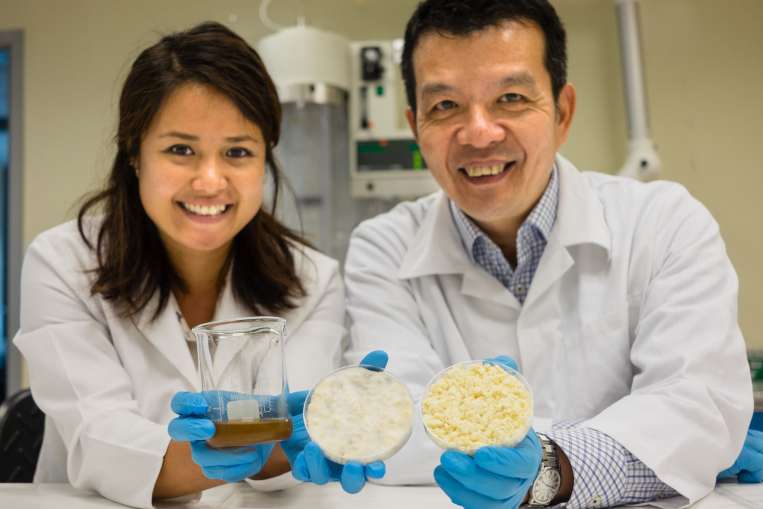
- Details
- Written by: Quintus Potgieter
Australia's forward thinking, proactive, stance when it comes to energy storage continues to be strengthened by government's urgency to get more and more people balancing out the power grid by using home batteries.
The Australian government has awarded 200 houses with discounted Tesla Powerwall batteries storage units in Canberra. The idea is that the houses would use the battery when the grid is under pressure so that they can alleviate some of the energy dependency. The Powerwall utilizes solar panels to charge the battery up and then stores the energy, ready for use, ready to power homes.
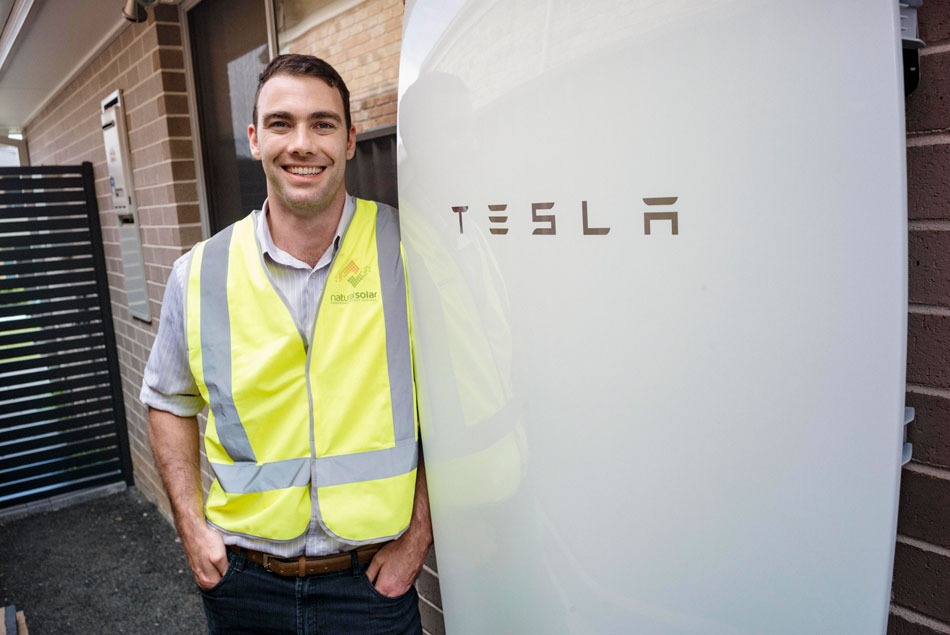
According to Mashable, three Australian companies have also been given funds to jumpstart the process of getting houses less reliant on the grid. The companies are SolarHub, ActewAGL Retail, and ITP Renewables. They receive A$200,000 each to take part in the Next Generation Energy Storage Pilot .
The Australian Capital Territory (ACT) minister for the environment, Simon Corbell, said: "By committing to support battery storage in this early stage of its entry into the market we want to open the door for the ACT to lead research into high-penetration renewables and attract international and national companies and research leaders into this developing space."

However, there is trouble in paradise for customers who have already tested the Powerwall out. A company named Genentech Media has reportedly heard complaints from a German Powerwall owner that the Powerwall is too loud. The man measured his decibels the Powerwall emitted and found it to be more than 80 decibels. The man says the noise was audible in his whole house.
Tesla sent a technician out to see what the problem was. The customer said: "I was told that the power consumption of the ventilation or cooling system was reduced to 15 percent of its original value. After this update, the noise was not there anymore."
Even though the problem was solved, Logan Goldie-Scot, head of energy storage analysis at Bloomberg New Energy Finance spoke to GTM and said: "I've heard they're loud enough to want to relegate to a garage or outside. Not for communal areas, certainly. I haven't been able to substantiate this, though."
If the Powerwalll continues to hum uncontrollably, it could put a strain on orders of the first batch that are being released by Tesla, but for right now it seems like an issue that can be easily rectified by either a technician or by relocating the Powerwall itself.
- Details
- Written by: Quintus Potgieter
Marking almost a week since the earthquakes in Japan and Ecuador, engineers are still scratching their heads at the randomness of the quakes. Seismologists are also trying to debunk the fact that the earthquakes could be linked to some unknown seismic activity.
Jonathan Stewart, a professor of civil and environmental engineering in the UCLA Henery Samueli School of Engineering and Applied Science, said: "The occurrence of earthquakes in time is more or less a random process."

Mark Benthien, director of outreach for the Southern California Earthquake Centre, agreed, saying: "There's absolutely no link. There are times when large earthquakes do trigger an earthquake somewhere else. The Japan earthquake was certainly not large enough to trigger an earthquake in Ecuador."
Experts are now warning that Thailand could be in danger as well due to resting on "hidden fault lines". A structural engineering expert from the Asia Institute of Technology, speaking to Bangkokpost, said: "The question is when -- we won't know until it comes."
There is also renewed pressure in Japan to pressure the government to review building law for buildings less than three storeys, to ensure they are earthquake-proof.
The insurance and reinsurance industry has unsurprisingly taken a knock after the earthquakes in Japan as well. An estimate released by AIR Worldwide projected losses of $1.7 billion to $2.9 billion. The company is the leader in catastrophe risk modelling software and consulting services.
Dr Tao Lai, a senior principal engineer at AIR Worldwide, said: "Kyushu Island lies on the overriding plate above the Philippine subducting plate to the west of the Nankai subduction zone. The region is exposed to subduction interface, intraslab, and shallow crustal earthquakes."
- Details
- Written by: Quintus Potgieter
Apple Inc. has made a move that sort-of/totally confirms rumors that have been swirling for a year. They could be manufacturing their own vehicle. Today, the company hired the former vice president of vehicle engineering at Tesla Motors, Chris Porritt. They recruited him for what Apple are calling "special projects". On top of this, it was revealed that they also have a super-secret lab where they are building their next product. According to Frankfurter Allgemeine Zeitung, the lab is in Berlin and according to BGR, has 15-20 employees that have qualifications in engineering, software, hardware and sales.

The most recent rumor stipulates that the car will be out between 2019-2020 and might have self-driving capabilities as well.
Porritt, who now joins Apple, used to also be at Aston Martin and went on to work for Land Rover as well. When he was at Tesla he reportedly worked on the Model S and X platforms and met with Elon Musk on a regular basis.
According to Electrek, Musk jokes about Apple being the 'Tesla Graveyard'. Musk apparently joked, saying: "We always jokingly call Apple the 'Tesla Graveyard'. If you don't make it at Tesla, you go work at Apple."
Teslas has cleared up the situation since the news broke yesterday and confirmed that Porritt left Tesla in September of 2015. He is now at Apple as a "Special Projects Group PD Administrator" according to Electrek.
Nonetheless, we should be looking forward to an announcement from Apple whenever the team of engineers perfects a prototype of their not-so-secret secret vehicle they are manufacturing.
- Details
- Written by: Quintus Potgieter
Hot off the press today is another revelation from a car manufacturer that has admitted to altering the truth in terms of carbon emissions data. Japanese car company, Mitsubishi, has said that the data of 625,000 vehicles was manipulated.
In a statement released by Mitsubishi, they admitted:
In connection with the certification process for the mini-cars manufactured by the MMC, we found that with respect to the consumption testing data submitted to the Ministry of Land, Infrastructure, Transport and Tourism (MLIT), MMC conducted testing improperly to present better fuel consumption rates than the actual rates; and that the testing method was also different from the one required by Japanese law. We express deep apologies to all of our customers and stakeholders for this issue.
It is currently unclear what the punishment for contravening Japanese law will be for the company. This admitting of guilt comes after Volkswagen was also found to be underreporting carbon emissions data. Opinion makers were very confident that the VW revelations would lead to other automakers admitting to the same 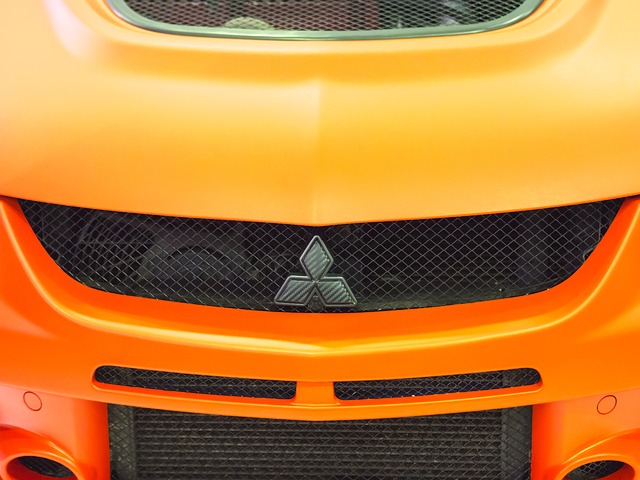 practices, which has been confirmed with Mitsubishi's announcement. The company says that it has altered four classes of its vehicles which include minivans, trucks, and passenger cars under the kei banner of vehicles manufactured by Mitsubishi.
practices, which has been confirmed with Mitsubishi's announcement. The company says that it has altered four classes of its vehicles which include minivans, trucks, and passenger cars under the kei banner of vehicles manufactured by Mitsubishi.
"The applicable cars are four mini-car models, two of which are the "eK Wagon" and "eK Space" which have been manufactured by MMC; and the other two are the "Dayz" and "Dayz Roox" which have been manufactured by MMC and supplied to Nissan Motors Corporation since June 2013," the statement by Mitsubishi read.
They also confirm that production and sales of the vehicles in question will be stopped immediately. According to Bloomberg, the company's shares fell by 15 percent on the back of the announcement.
Seiji Sugiura, an analyst at Tokai Tokyo Research Center, spoke to Bloomberg, saying: "This may be very different from Volkswagen's issue, but the market has become very sensitive to such kind of news. It may have a similar impact in terms of sales and the company's reputation."
More as this news develops.
Source: Mitsubishi & Bloomberg
- Details
- Written by: Quintus Potgieter
And now for something completely different. Bear Grylls was right all along. Urine really does hold some sort of power. Researchers at the University of Bath and the Queen Mary University of London want to generate energy using...wait for it...urine. Allegedly, this would be able to provide electricity to rural areas at a very small cost of £1-£2. It is a microbial fuel cell that utilizing natural processes to generate natural 'electric' bacteria. This would theoretically turn urine into electricity.
The urine flows through the fuel cell which causes a reaction, thereby generating electricity that can be stored or even power electronic devices. The team responsible for this creation is the university's Department of Chemical Engineering, Department of Chemistry and the Centre for Sustainable Technologies (CSCT).
A lecturer from Bath's Chemical Engineering branch said,
If we can harness the potential power of this human waste, we could revolutionise how electricity is generated. Microbial fuel cells can play an important role in addressing the triple challenge of finding solutions that support, secure, affordable, and environmentally sensitive energy, known as the 'energy trilemma'." There is no single solution to this energy trilemma apart from taking full advantage of available indigenous resources, which include urine.
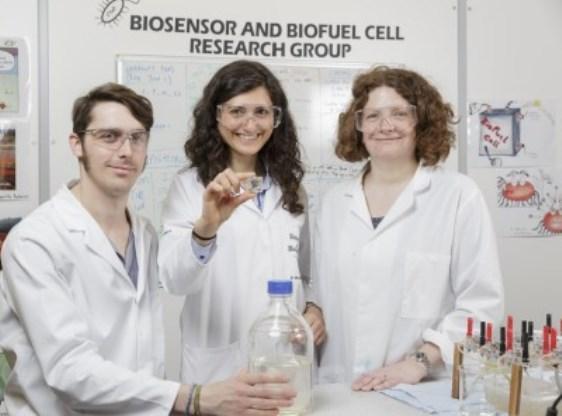
The researchers claim the cell can achieve two watts per cubic metre which would be enough energy to power a mobile phone. Yes. You can power your cell phone with your urine. Head of the Department of Chemical Engineering, Tim Mays, said: "Renewable 'pee-power' is a brilliant idea and its use in developing countries will have a huge positive impact on people's lives in areas of energy poverty."
The paper titled Towards effective small scale microbial fuel cells for energy generation from urine was published in the Electrochimica Acta journal. The team also states in the abstract that they were able to connect three devices together and achieve an output ten times higher than one cell by itself.
The team is now continuing their work into improving the power output and think that they can come up with more efficient designs that could actually see this cell making its way to impoverished communities.
Source: The Bath Chronicle
- Details
- Written by: Quintus Potgieter
In the fourth industrial revolution, everything is connected to one network that is usually operated by cloud-based services. The problem is that cyber threat then becomes a real problem, due to hackers finding their way into networks and causing real problems for automated factories and industrial complexes that utilize the Internet of Things.
Kaspersky has been keeping their eye on the future of security in industrial sectors and is advertising a solution to the issue of cyber security. Matvey Voytov, solution business lead: critical infrastructure protection business development at Kaspersky, said: "With industrial attacks, you don't have to be the victim to be affected."
Kaspersky is focused on trying to protect power stations and water purification facilities who have become victims of cyber threat in recent times, by introducing new Kaspersky Industrial CyberSecurity (ICS). The program will venture to protect ICS/SCADA servers, HMI panels, engineering workstations, PLCs and more, according to BusinessWire.
Eugene Kaspersky, the CEO and founder of Kaspersky, said: "Many enterprises don't even know that they are hacked, especially when it comes to SCADA systems (systems for remote operating and control). They know what to do with office network attacks, but they are clueless when it comes to industrial cyber systems, even the police don't have a clue." He was talking the London Science Museum where they launched the new security system. He also urged governments to introduce cyber systems to manage critical infrastructure. This, after a power plant in the Ukraine was taken down due to a SCADA systems attack.
He further went on to say:
In many companies, we see a disconcerting approach to industrial computer systems - as long as these systems work, they don't touch them. As a result, you would see some totally outdated systems like MS DOS, or Windows 3.1, powering systems of critical infrastructure companies.
Protecting an office network is much more difficult than simply downloading an antivirus. But for industrial systems, it is even more difficult because every plant is different. It's not about deploying a product, it's an ongoing project.
Cevn Vibert, an industrial control systems security evangelist from Solutions PT, said: "In the past we have been designing system to have redundancy in case of failure. But we haven't been designing them with the situation in mind that someone maliciously harms them, overrides them. We need a complete change of mindset.
Engineering and Technology Magazine points out that industry cyber security needs to be in place for places like hospitals, due to cyber threats that infect their computers with ransomware. Hospitals in Australia, the United States, and Germany have reportedly been under threat of ransomware attacks.
However, Eugene Kaspersky says that his answer is not to pay ransom but rather to put the correct security in place. He concluded by saying, "Securing infrastructure against hackers is a massive challenge, but I believe that one day we will achieve the state when you can have a wind turbine connected to the Internet, but still be absolutely secure. My dream is to achieve the level of security where it would cost more to hack something than are the possible gains from the attack."
- Details
- Written by: Quintus Potgieter
MIT is researching new methods of how to produce medicines more efficiently in case of disease breakouts that require mass amounts of pills to be dumped and would act as a portable assembly line for creating new drugs on demand.
In a new report named On-Demand continuous-flow production of pharmaceuticals in compact, reconfigurable system written by a host of engineers at MIT, "a fridge sized box" is reportedly the next step into meeting these goals.
In the abstract, the team writes:
Commodity chemicals tend to be manufactured in a continous fashion. However, the preparation of pharmaceuticals still proceeds batch by batch, partly on account of the complexity of their molecular structure. Adamo et al. present an appartus roughly the size of a household refrigerator that can synthesize and purify pharamceuticals under continous-flow conditions. The integrated set of modules can produce hundreds to thousands of accumulated doses in a day, delivered in aqeous solution
Producing pharmaceuticals is currently a long process due to the amount of chemical engineering that occurs at more than one venue. If there are any problems at any of the plants where pharmaceuticals are manufactured, it can slow the process down.
The researchers at MIT say that in the future this will not be a problem if their self-contained assembly line gains popularity. According to TechnologyReview.com, the machine can currently produce Benadryl, Valium, and Prozac. For now, these are the only drugs that will be accommodated due to the U.S. Defense Department funding the project, ensuring that only drugs available in Medic pack's would be available.
Klavs Jensen, a professor of chemical engineering and materials science and engineering at MIT is confident batch processing with continuous-flow technology is the way forward. He emphasized the cost benefits to making them with the machine, saying it would be far more economical. Jensen says, "The goal of this project was to build a small-scale, portable unit that was completely integrated, so you could imagine being able to ship it anywhere. And as long as you had the right chemicals, you could make pharmaceuticals."
Allan Myerson, an MIT professor of the practice in the Department of Chemical Engineering said: "Think of this as the emergency backup for pharmaceutical manufacturing. The purpose is not to replace traditional manufacturing: it's to provide an alternative for these special situations."
- Details
- Written by: Quintus Potgieter
A robotic kangaroo that emulates actual kangaroo jumping is now being previewed at a worldwide automation company, Festo. The kangaroo isn't the only thing they are showing off. They have also just previewed a spherical, blue bottle looking bottle dispenser. The videos below speak for themselves, but Festo seems to be wanting to show off what they have created and fantasize about the future of robotics among us, whether these robots assist us or not.
The delivery drone is reportedly filled with helium and - as is apparent in the video - controlled through a host of propellors that seem to smoothly move the sphere around space, navigating with GPS and cameras. It then laps up an object with a 'tongue', stores it inside the sphere and then carries the object and deploys it when it has reached its destination.
Then we get to the robotic kangaroo the company has made. The robot jumps around with 2 motors for the hips, one motor for the tail, a high-pressure accumulator, a compressed air reservoir for keeping the neck and back in place, a sensor system and a CECC control system and a whole bunch more stored within its shell of a body. It is all explained in the video below. The more important part of the video is where a human controls the robots actions through an Internet of Things wristband that connects to the robots network and gives it commands on what it should be doing.
Festo will be showing off its new range of robots at the industry event of the year Hannover Messe. But if this is the first preview of what Festo has up their sleeve, a robopocalypse is looking more likely before the end of 2016.
- Details
- Written by: Quintus Potgieter
A rare incident left NASA's aerospace engineers scratching their heads. The Kepler spacecraft in charge of finding new plants went into what NASA calls, 'emergency mode'. Allegedly the mode only switches on when it goes through some sort of turmoil and as a result, according to ArsTechnica, "limits its activity and burns through the probe's limited fuel supply at an accelerated pace."
NASA's official website reported that mission operation engineers had successfully recovered the spacecraft from the Emergency Mode and also saved the amount of fuel it was starting to burn through.
On Sunday morning, the spacecraft reached a stable state with the communication antenna pointed toward Earth, enabling telemtry and historical event data to be downloaded to the ground. The spacecraft is operating in its lowest fuel-burn mode.
Kepler was supposed to perform a maneuver to line up with the center of the Milky Way but entered Emergency Mode fourteen hours before it got the chance to. NASA says this is the first time in seven years in space that the spacecraft has gone into Emergency Mode or performed strangely. In a statement, NASA said:
It was the quick response and determination of the engineers throughout the weekend that led to the recovery. We are deeply appreciative of their efforts, and for the outpouring of support from the mission's fans and followers from around the world. We also recognize the tremendous support from NASA's Deep Space Network, managed by the Jet Propulsion Laboratory in Pasadena, California, and to NASA's other missions that surrended their scheduled telemtry links in order to provide us with the resources needed to protect the Kepler spacecraft.
Now the task of figuring out exactly what forced Kepler into it's Emergency Mode must happen through logging into the spacecraft now that communication has been reestablished.
Perhaps, aliens don't want us to find their home planets? Who knows what might have sent into Emergency Mode but at least they got it back. A win for aerospace engineers.
- Details
- Written by: Quintus Potgieter
Boeing rival, Airbus, is reporting that the first quarter of the year wasn't a good one for them. The company is saying the slump they have found themselves is the slowest start to the year compared to 2011. Airbus was also said to be retrenching some of its aerospace engineers from within in the country in February.
According to Reuters, Airbus reportedly only made 32 aircraft sales and delivered 125, which equals to 74 percent down compared to the same time last year. Airbus were also unable to sell two A380s superjumbo jets, which would have seen an 840 seater plane make its way to commercial passenger flights. Known as the "flying sardine cans," the planes would have been sold to Air Austral but the order fell through and was cancelled. However, they did receive two orders from - what Reuters is calling - an 'undisclosed customer'. So, soon you could be flying in an A380 with 839 other passengers.
According to Bloomberg, the 125 Airbuses that were delivered to customers this year pales in comparison to the 176 aircraft that Boeing have delivered, showing who has won the first quarter of the year.
However, Boeing has also said they expect to be in a slump very soon as they look toward implementing a new model of plane.
To make matters even worse an Airbus 320 belonging to Air India fell out of the sky during an alleged training center fly by.
- Details
- Written by: Quintus Potgieter
A group of engineers from New Zealand has been awarded a prestigious award for their work in the Canterbury Earthquakes that started on the 4th of September, 2010 and continued into 2011. After the earthquake, the engineers started to research liquefaction damage to hopefully earthquake-proof roads and buildings for any future seismic activity. Liquefaction damage refers to the breakdown of soil during an earthquake that splits roads in two and causes some devastation for houses and buildings.
The leader of the team, Sjoerd Van Ballegooy, walked away with the Outstanding Paper Award from the Earthquake Engineering Research Institute in San Francisco.
According to Stuff, their research consisted of 81,000 visits to the homes that were damaged as a result of the earthquakes and did tests on "ground motions and depth to groundwater."
Van Ballegooy said, "Much of eastern Christchurch has been built on sand and silty soil, with shallow ground water, setting the stage for extensive liquefaction damage to occur following strong earthquake shaking. To make matters worse, thousand of homes were built on non-robust concrete slab foundations, resulting in a significant portion of the residential building portfolio being damaged beyond economic repair as a result of the liquefaction."
According to Voxy, the Canterbury earthquakes caused the most extensive liquefaction damage ever seen in built up urban areas.
"When we began analysing all of this information we discovered that in some areas, the damage caused by liquefaction was much worse after the shaking on 13 June 2011 and 23 December 2011 despite those earthquakes being significantly smaller than the previous ones on 4 September 2010 and 22 February 2011," Van Ballegooy said.
He went on to relay their findings, saying, "A combination of lateral spreading, removal of the sand and silt that was ejected to the ground surface, densification of the subsurface materials and tectonic subsidence occurring over four main events were the major factors that contributed to the reduction in thickness of the non-liquefying crust."
The researchers concluded their findings by urging private insurers, policy makers, architects, engineers, urban planners and other professionals to "reduce the economic and social impact of liquefaction related damage" for the future earthquakes that could possibly happen.
- Details
- Written by: Quintus Potgieter
Data communication engineers are on high alert after Whatsapp enabled something that only apps like Telegram, Signal, and other apps had; end-to-end encryption of messages. You might have seen it enabled on all of your chats - activating it on their platform. There are a billion people using Whatsapp in the world so it is quite the stance for privacy in the world of today. The sudden stance comes on the back of the revelations that the FBI were able to unlock the iPhone of the San Bernadino shooter that Apple refused to unlock.
Whatsapp (owned by Facebook) spoke about the move to encryption, saying, "When you send a message, the only person who can read it is the person or group chat that you send that message to. No one can see inside that message. Not cybercriminals. Not hackers. Not oppressive regimes. Not even us."
IBTimes, however, published a list of apps that people could further look into, to ensure that their privacy in data communications is secure. Something that a lot of people want with recent scandals like the Apple case, the Panama Papers et al:
Their list named the following apps that could be installed for extra privacy with data communications:
Signal: Publicly endorsed by former NSA spy Edward Snowden
iMessage and Facetime
Telegram
Wickr
- Details
- Written by: Quintus Potgieter
The WWF has released a report named Protecting People Through Nature: Natural Heritage Sites as Drivers of Sustainable Development that criticises industrial activity as being an irreparable problem to the environment.
In the foreword of the document, written by the Director General of WWF International, Marco Lambertini:
Shockingly, almost half of all natural World Heritage sites are threatened by harmful industrial activities and operations, such as oil and gas exploration and extraction, mining, illegal logging, construction of large-scale infrastructure, overfishing, and unsustainable water use.
According to TIME Magazine, 114 out of 229 natural heritage sites - which were awarded that status by UNESCO - are said to have oil, gas or mining concessions attached to it.
Lambertini says:
Healthy natural World Heritage sites contribute to poverty reduction, help alleviate food insecurity, combat climate change, and restore and promote the sustainable use of ecosystems. Protecting these sites and investing in their future should be part of each government's national action for achieving its Sustainable Development Goals commitments.
The WWF now calls on governments to develop policy guidelines to protect natural heritage sites from being damaged by industrial activity, amongst some other demands listed in their report. They have also called on corporate and finance entities, as well as NGOs and society groups to lend their help in preventing industrial activity by engineering companies which damage the natural heritage sites and conservancies.
- Details
- Written by: Quintus Potgieter
Engineers from the University of California, San Diego, the University of South California and the California Institute of Technology have been investing their time to develop a new kind of steel that would be strong enough to survive damage without being significantly deformed, according to Design-Engineering.
The steel is being called SAM2X5-630 and is an "amorphous steel alloy" that is cheap to make but a solid steel that has never been seen before. Made up of atom arrangements that contradict steel formations of the past.
It is breaking elasticity limits of steel alloys, the researchers say. They say the alloy can survive pressure up to 12.5 giga-Pascals. This would translate to 125,000 atmospheres.
Olivia Graeve, a professor of mechanical engineering at the Jacobs School of Engineering at UC San Diego, said, "Because these materials are designed to withstand extreme conditions, you can process them under extreme conditions carefully."
The researchers conducted experiments that saw the alloys react to shock by shooting the steel with a gas gun with copper disc 'bullets' at 500 to 1300 meters per second. The researchers say that the alloys were deformed but more protected than any other steel would have been and it was not permanently damaged.
Is this the steel of the future? We will keep your eyes on it.
- Details
- Written by: Quintus Potgieter
According to Reuters, engineering exports to the United States from Germany are not happening at a fast pace this year. The reasons given are "lower fracking investments, a weaker global economy and a euro-dollar rate stabilisation" according to an industry association, that remained unnamed in the report.
More than half of German firms believe that these figures will improve later on in 2016, according to a survey conducted by the VDMA association. The VDMA is one of Europe's leaders in industrial associations that presides over 3,100 member companies.
The VDMA reported that the improvement - if any - would not be able to eclipse the last measurement of an 11% rise in 2015.
The VDMA, in a statement, said, "The American market does not offer grounds for euphoria. But the engagement of German engineering firms in America is not short-term."
Reuters reports that the U.S. was the largest market for engineering exports in 2015. The exports rose to $19.1 billion. China struggled due to a 6 percent drop.
Germany and the U.S. were also big trading partners, reaching one hundred twenty-nine billion three hundred forty-two million six hundred and ninety thousand dollars.
Furthermore, engineering jobs opening up in Germany, according to Reuters are:
...power train engineering, materials handling, construction equipment, agricultural engineering, machine tools, and food technology and packaging.
- Details
- Written by: Quintus Potgieter
Safe Work Australia and Good Design Australia are teaming up to present an award celebrating innovation, creativity and most importantly, safety in design in engineering projects. Safety in design has been reiterated globally due to recent incidents involving collapsing structures and bad design practices.
Michelle Baxter, Safe Work Australia's CEO spoke to SafetyCulture.com, saying, "Considering safety in design is important because well-designed work can prevent work-related deaths, injuries, and illnesses. The most effective design process begins at the earliest opportunity during the conceptual and planning phases. Effective work design considers how work is performed, the physical working environment, and the workers themselves." The winners of this award will be announced on the 27th of May, 2016.
SafetyCulture.com outlined the categories that are awarded in the new awards program:
Categories for the Good Design Award include product, service, digital, communication, architectural and business model design, and social innovation.
According to Malcolm Barker (a BSc Civil Engineering graduate from the University of Natal Durban in South Africa) and Simon Casey (a man with 20 years experience as a Risk and Safety Consultant), there has been a "significant reduction" in LTIs (lost time injuries) in the last 5 to 10 years in Australia specifically. However, this does not mean that the requirements of safety in design fall away in the country. Thanks to a law implemented from the Queensland Work Health & Safety Act of 2011, there are laws in place that require designers, engineers and governments to ensure that sites are safe and the end product are safe as well. These would be matters including:
a) the likelihood of the hazard or the risk concerned occuring; and
b) the degree of harm that might result from the hazard or the risk; and
c) what the person concerned knows, or ought reasonably to know about
i) the hazard or the risk; and
ii)ways of eliminating or minimising the risk; and
d) the availability and suitability of ways to eliminate or minimise the risk; and
e) after assessing the extent of the risk and the available ways of eliminating or minimising the risk, the cost associated with available ways of eliminating or minimising the risk, including whether the cost is grossly disproportinate to the risk
However, the Queensland Health & Safety Act of 2011 is limiting in the sense that it does not "require a positive demonstration of safety due diligence." Thankfully, to remedy this fact, the Health and Safety Executive published the UK Health & Safety Executive Reducing Risks, Protecting People document and that has a clause that ensures risk management needs to done even when the chance of risk is small:
Our policy is that the precautionary principle should be invoked where:
- there is good reason, based on empirical evidence or plausible causual hyptohesis, to believe that serious harm might occur, even if the likelihood of harm is remote;
- the scientific information gathered at this stage of consequences and likelihood reveals such uncertainity that it is impossible to evaluate the conjectured outcomes with sufficient confidence to move to the next stages of the risk assessment process
The precautionary principle is a ruling that refers to the obligation that designers, architects, engineers, and governments have. It ensures that elements of a product they produce must be evaluated to determine whether or not they are harmful to either humans or the environment. They have a social responsibility to stop any form of harmful object making its way to the public. This is very important in civil engineering specifically.
Safety is important, but that starts at the designing phase. Quality designing is key in the safety in design. In Engineering News Network Episode 8, the Dean of Engineering at the Engineering Insitutue of Technology, Steve Mackay says designers should be focusing on what the market wants. He says, "As engineers we are taught to think about what the best thing is but in fact, we need to go one step further with our designs and think about what does the market want? What can I make which is simple? What will make my customer ecstatic?" He further says that engineers should think of the end user so that the product can result in a good engineering design.
To read more about Safety in Design practices read: Safe Design of Structures - Code of Practice
For useful tips on 'SiD' if you do happen to be a designer, architect, engineer or government official and want to know what to look out for, take a look at this educational video:
- Details
- Written by: Quintus Potgieter
Like something out of an Isaac Asimov novel, Microsoft has shown what its HoloLens might be capable of in the near future. The HoloLens - if you haven't seen it by now - is a new augmented reality (AR) headset that integrates with the spaces visible in front of you, displaying objects around the world you know. Now, a new feature is being advertised that might revolutionize the technology and get the consumers salivating.
It is called 'holoportation'. In short, it is a hologram that looks very Star Wars-esque. Shahram Izadi, a Partner Research Manager with Microsoft says that this could change the way humans communicate.
"Imagine being able to virtually teleport from one space to another in real time," Izadi said in the company's announcement video. The idea is that those wanting to communicate via hologram both would have to wear the HoloLens from Microsoft and will be able to view each other in real time in augmented reality.
Microsoft's newly designed 3D capture system utilizes cameras set up around a room and tracks any movement, transferring data into computers that can represent it in a 3D space. The engineers also say that the sessions can be recorded and played back. Something that could revolutionize business and home life.
Izadi spoke of the possibilities, saying, "Imagine using this type of capture technology to connect with family members who are thousands of miles away."
If there was any doubt as to why you would want one of these HoloLenses, there is little doubt now.
- Details
- Written by: Quintus Potgieter
Tesla's Powerwall is no longer the only player in the game. Australian energy storage company, Redflow, has thrown their hat into the ring with the announcement of a 10-kilowatt battery called the ZCell. The cell will cost between $17,500 and $19500 (USD) including installations and is the latest competitor in the energy storage range of products available to consumers.
Executive Chairman of Redflow, Simon Hackett has hyped the battery up by saying: "ZCell lets you discharge 100 percent of its total stored energy every day, whereas other battery types can require a significant amount of their underlying storage capacity to be locked out to prevent battery damage and to extend battery life. ZCell is a unique flow battery that loves to be fully charged and discharged daily."
Hackett also thinks that they have the better battery technology right now, compared to Tesla, however, he believes it is not about winning or losing amongst the battery storage competitors. According to OneStepOffTheGrid, the battery was designed with "zinc bromine flow battery technology" that was formulated at the University of Queensland.
When asked about how this will affect the future of power utilities and the entities that operate the grid and the country's energy, Hackett said, "I agree that the grid operators don't need to price themselves out of existence, but my strong view is that 5 years from now the smart ones will have realised they want battery storage operated to send power back when the grid needs it."
In the sixth episode of Engineering News Network, the Dean of Engineering at EIT (Engineering Institute of Technology), Steve Mackay, shares Hackett's sentiment, that the power utilities might be in for a tumultuous period. He said, "When you have a decreasing amount of power from the utilities' requirement - because you are producing your own power at your home - you'll find that the utility is having a drop in revenue." Mackay also admits that the government controlled power utilities "jack-up" the prices which cause power consumption to "drop-off" even further. "This is causing major challenges for power utilities around the world and is often referred to as the 'power utility spiral of death'."
- Details
- Written by: Quintus Potgieter
The University of Illinois at Urbana-Champaign's computer science engineers have made an unprecedented leap into the future of fiber-optic speeds. The university said that their engineers successfully reached 57 gigabits per second error free on a network of fiber optic technology. According to BGR, it is a new record in the industry.
The team effort was led by Professor Milton Feng who was also in charge in 2014 when the team broke through the 40gbps mark. Feng said, "There is a lot of data out there, but if your data transmission is not fast enough, you cannot use data that's been collected; you cannot use upcoming technologies that use large data streams. like virtual reality. The direction toward fiber-optic communication is going to increase because there's a higher speed data rate, especially over distance."
Therefore, these kinds of breakthroughs have far-reaching benefits for the future of IoT devices and - as Feng has pointed out - speedier access to future and current virtual reality networks. The only problem is extensive cooling for far-range fiber, the current research is only currently useful for short-range fiber, according to Engadget.
The issue with running break-neck speeds on fiber-optic networks is the heat that comes with it. The team was running the 57gbps at 185 Fahrenheit (85 degrees celsius). "That's why data centers are refrigerated and have cooling systems," Feng said.
- Details
- Written by: Quintus Potgieter
It was just the other day when we saw a video of a mechanical engineer pushing a robot down with a stick and that same robot getting up and continuing its job. That video came out of a robotics company called Boston Dynamics that is owned by the company that owns Google, Alphabet. Then the news came streaming in that Alphabet was looking to sell off its robotics division in an interesting plot twist. On the back of that announcement, Amazon has announced its very own robotics branch named Amazon Robotics. Amazon recently acquired Kiva Systems for $775 million and scheduled a super-secret meeting with media outlets and investors to see what they had been working on in the last four years.
The details of that 'super-secret' meeting have finally been divulged and present an interesting chance for the company to eclipse the recent strides Boston Dynamics has made in creating potential 'helper robots' for households around the world. However, Boston Dynamics being sold off in the fashion that it doesn't inspire confidence in whatever they were building because Alphabet looks uninterested in continuing and probably do not think the company will be profitable.
Amazon Robotics' event was called MARS (Machine learning, home Automation, Robotics and Space exploration). They showed off robots built by UCLA students, and also had Kiva robots that served food and drinks on a mobile table that rode around the event. The photos of the events can be found on BusinessInsider. Both Amazon Robotics and Boston Dynamics are looking into the profitability of potential household robots and will continue to do so wherever the conversation lands up.
In the United Kingdom, the House of Commons Science and Technology Committee will be launching an inquiry into how society will soon be altered by robotics. They will be looking into how it will affect the workplace, how it will affect jobs numbers and more concerns. Recently, Google's DeepMind AlphaGo Artificial Intelligence beat South Korean 'Go' professional Lee Se-dol.
Talking to ZDnet, Nicola Blackwood MP, Chair of the Science and Technology Committee at the House of Lords, said: "Robots are now beating humans at even the most complex games, like Go. Artificial intelligence will play an increasing role in our lives over the coming years. From navigation systems to medical treatments and from new manufacturing techniques to unmanned vehicles, new applications are rapidly being developed that involved robotic decision making."
Therefore, educating engineers to ensure safety in terms of robotics software and hardware is necessary. The United Kingdom sees this opportunity for the future of engineering education in robotics and expands the funding net for robotics company start-ups at the Royal Academy of Engineering.
One of the eight finalists is Alexander Enoch, a student at the University of Edinburgh. He wants to build a robot that costs less than £100 and would lead to education in "engineering and coding". Enoch, speaking to TheEngineer says, "I think robotics is a great example of how many aspects of engineering can all come together to make a complex system. There's already a shortage of engineers in the UK, and with automation becoming more commonplace it's really important that young people are given the opportunity to get engaged with as many aspects of engineering as possible."
- Details
- Written by: Quintus Potgieter
2015 was a big year for renewable energy and energy storage, according to a new report. The report issued annually has shown that "renewable energy investments" went up by 5 percent in 2015. The new number indicates that the amount of money invested in renewable energy in 2015 would amount to $286 billion. This excludes any hydroelectric programs currently in the world. The report in question is UNEP's 10th Global Trends in Renewable Energy Investment Report 2016. The report is a collaboration between the Frankfurt School-UNEP Collaborating Centre for Climate & Sustainable Energy Finance and Bloomberg's New Energy Finance (BNEF) centre.
In UNEP's video report, the Executive Director of UNEP and the Under-Secretary-General of the United Nations, Achim Steiner said: "Not only has for the first time the percentage of total gigawatts installed in the world now exceeded - in terms of renewable energy installations- that of all other energy technologies put together." He also says the developing world has contributed almost half to the $286 billion, indicating that the global South is in need of renewable energy. About this he said, "What is remarkable renewable energy technologies is that they have also migrated from being perceived as a technology of the rich and a luxury for those who could afford it, to actually becoming a shortcut to access to energy."
The number that UNEP estimates renewable energy has reached in the last 12 years of renewable energy investment - in their press release - is $2.3 trillion.
Chairman of the Advisory Board at BNEF, Michael Libreich, said: "Global investment in renewable capacity hit a new record in 2015, far outpacing that in fossil fuel generating capacity despite falling oil, gas and coal prices. It has broadened out to a wider and wider array of developing countries, helped by sharply reduced costs and by the benefits of local power production over-reliance on imported commodities." The research indicates that China - unsurprisingly - is ahead of the pack with $103 billion into the market in 2015.
The groups do admit there is still a lot of work to be done in the industry to ensure a clean energy future, however, the latest figures on encouraging in terms of global expansion of renewable energy.
Expanding on renewable energy news, Tesla has pulled the 10 kilowatt-hour Powerwall device before it even goes on sale, according to HuffingtonPost. They are now committed to working on the 6.4 kwh and 7 kwh models that instead of supplying twenty-four-hour power to households will only supply energy to the highest consumption hours during the day.
- Details
- Written by: Quintus Potgieter
A photo of an exploded lithium-ion household energy storage battery is making its rounds on social media. The photo allegedly comes out of Victoria, Australia. According to RenewEconomy, Australia could see 50,000 batteries installed in households in the next 12 months.
Australia's federal government has thrown its weight behind energy storage which will fund promotion, local research, and innovation in the industry. Greg Hunt, the federal environment minister in Australia, said: "Increasingly we will see the adoption of battery storage, which is the key thing to enable people to go off the grid. This is clearly the future."
However, now with some proof that the batteries are not as safe as previously thought, some question marks are being raised as to what can be done to ensure the safety of lithium-ion batteries.
In one of our recent reports, the Australian Clean Energy Council were said to be putting emphasis on 'integrity and safety' in the battery storage industry. The recent photo would probably be on their radar after their intentions were made clear. The battery in the photo was developed by a company named Growatt. The company in question uses battery storage technology from China.
RenewEconomy wrote: "It is not known what caused the 'explosion' although it is assumed to be a case of 'thermal runaway'. It is not known whether it is an installation fault or a problem with the system, or some third party factors."
The CEO of the Energy Storage Council, John Grimes, said: "The fact that there is no standard means there is the opportunity for shysters and carpetbaggers to go out and put something in the marketplace." He further said that policymakers need to highlight the need for regulation and highly skilled professionals that can install the batteries.
Dean of Engineering at the Engineering Institute of Technology, Steve Mackay, when broaching the topic of training professionals to install battery storage devices, said: "With training not only do you need to have basic electrical theory, you need to look at safe working with photovoltaic cells, batteries, connecting to the grid and finally the financial and economic aspects of connecting to the grid."
Glen Morris, the chief technical expert at the Energy Storage Council, said: "Anyone can sell a battery storage system in Australia. I wouldn't be putting chemistries inside a building until I knew it was inherently safe."
Right now, the safety of battery storage systems cannot be ensured, even by companies that claim to have the A-grade products from China. The opinion of the majority of people considering taking themselves off of the grid is that they will wait out until there is an officially safe product available to the mass consumers.
- Details
- Written by: Quintus Potgieter
It was only two weeks ago that a self-driving car belonging to Google crashed into the side of a bus due to judgment calls the software deemed necessary. As we reported there would be some scrutiny of the engineering behind self-driving car technology and now a robotics expert from Duke University came through for the skeptics.
Missy Cummings is the director of a robotics focused lab called the Human and Autonomy Lab at Duke University and testified to a Senate commerce committee that the self-driving technology isn't ready for deployment. Present at the hearing were executives from Google, General Motors, Delphi and Lyft, according to The Verge.
Speaking of the self-driving technology embedded into the cars that the UK want on the roads by 2017, she said: "There is no question someone is going to die in this technology. The question is when, and what can we do to minimize that."
She further went on to say, "I perceive there to be a rush to field systems that are not ready for widespread deployment. One issue is operation in bad weather including standing water on roadways, drizzling rain, sudden downpours and snow."
Chris Urmson, who defended the autonomous cars in the accident two weeks ago encouraged the Senate to start putting the federal regulations in place for the driverless cars so they can fast track getting them onto the roads, despite the scrutiny after the bus accident and accidents before them. He also urged the Senate to legalize the cars across the country instead of individual states using the technology.
Urmson told the Senate: "If every state is left to go its own way, it would be extremely impractical to operate autonomous vehicle across state boundaries."
Further queries into how vulnerable the GPS system was to hacking was brought to the Senate's attention by Cummings as well.
As a result, Urmson has said that the driverless cars have done over 1.4 million miles and have done the equivalent of 108 years on the road and that they were ready for deployment. According to TechInsider, Google's fleet of cars has only been in "17 minor accidents since 2012."
- Details
- Written by: Quintus Potgieter
A new report on water scarcity and how to solve it, compiled by a group of chemical engineers and scientists will be presented at the 251st National Meeting & Exposition of the American Chemical Society. The report in question is titled Chemistry and Water: Challenges and Solutions in a Changing World.
Conspiracy theorists love waxing lyrically about how water will be the cause of the next wars, but as time and climate change progress it is becoming more and more of a bargaining chip due to its scarcity in the world. The mission of the paper that is being presented is to address the issue of supplying the world with clean drinking water.
According to Phys.org, the researchers looked at four categories:
- Water for health and the environment
- Detection of contaminants in water supplies
- Treatment of water
- Nutrient and energy recovery
The intention is then to investigate how chemistry and chemical engineering can improve the situation that the world is facing. Engineers from five countries collaborated from September 2015 to research scarcity issues. It forms part of a project named 'Chemical Sciences and Society Summit series' that saw chemical companies from around the world agree to fund research into how to save water for the future generations.
According to Bassam Z. Shakhashiri, Ph.D., David L. Sedlak, Ph.D., and Jerald L. Schnoor, P.h.D, in a recent article in Chemical & Engineering News, they wrote; "In the developing world, nearly 1 billion people lack access to safe drinking water and sanitation because of the absence of distribution systems for clean water." This is what the new report released at the National Meeting & Exposition of the American Chemical Society will discuss.
The work that some of the engineers are currently doing is testing contaminants in water supplies around the world so that those contaminants can be phased out once the root cause of them is found. Anything that is currently poisoning water supplies and is deemed unhealthy will be the first focus for the chemical engineers attached to this project.
In addition, the scientists and engineers are reaching out, asking governments for global compliance and contribution so that the problem of unhealthy drinking water and water scarcity is solved.
- Details
- Written by: Quintus Potgieter
The Internet of Things abbreviated as 'IoT' is a word that you should familiarize yourself with because you're going to be hearing that word for years to come. Unless, of course, you're up to here with hearing about the Internet of Things.
The definition Oxford Dictionary gives us is: "The interconnection via the internet of computing devices embedded in everyday objects, enabling them to send and receive data."
Making the world's appliances, cars, televisions, radios, houses, malls and anything you could almost think of, a smart object.
The attractiveness of making our everyday objects connect to the internet is that we would be able to control them from a smartphone and access data on how those things are performing and how efficiently they are operating. Everything sent to a cloud, so you would be able to review any data for the rest of your life and it will never go missing.
Could the Internet of Things revolution lead to a cautionary tale about cyber security relatively soon? Perhaps. Cyber security studies will see a major spike in attendance and does need to be stepped up so that hackers cannot compromise the devices that are connected to the internet.
In India, The Financial Express spoke to Ashish Gulati, a manager at Telit India who focus on connecting businesses through the Internet of Things. He said: "Recent research conducted by Forrester in the retails industry found that 96% of retail decision makers are hoping to make the necessary changes to adopt IoT solutions in the near future, but over half are concerned about integration challenges."
Engineering and electronics giant, Bosch, is releasing their own software that will allow the exchange of data on their machines across the IoT networks. CEO Volkmar Denner said: "Many companies and consumers state that security concerns keep them from using cloud technologies and connectivity solutions." However, it seems that Bosch is confident in the IoT solutions they have and says that the progress in this sector - for them - is a milestone for the company.
Even Coca-Cola is getting involved. Derek Myers, a group director of strategy and commercialization said to reporters that the vending machines in the United States are now capturing 100 plus data points a second. The analytics that machines will be able to compute is going to be useful for any company that has a device connected to their IoT network. They will use IoT to display messages to a customer via the screen and could have the vending machines talking to each other as well.
What remains true about the IoT is the complexity of the network that these devices will be connected to. Research corporation, Gartner, estimated that 21 billion devices will be connected to the IoT by the year 2020. According to Crain's Detroit Business there are already 5 billion devices connected.
The possibilities of IoT are endless and more players will be throwing their hats into the ring and will go head to head to be the main provider of IoT hardware and software in the years to come. It is going to be interesting but the necessary cyber security needs to be in place if we are to have 21 billion devices connected by 2020.
